sample description
- Teacher: Ben Greenfield Life Hacker
- Reference1
- Reference2
- Reference 1
- Reference 2
- Reference 1
- Reference 2
sample description
fsdsdf
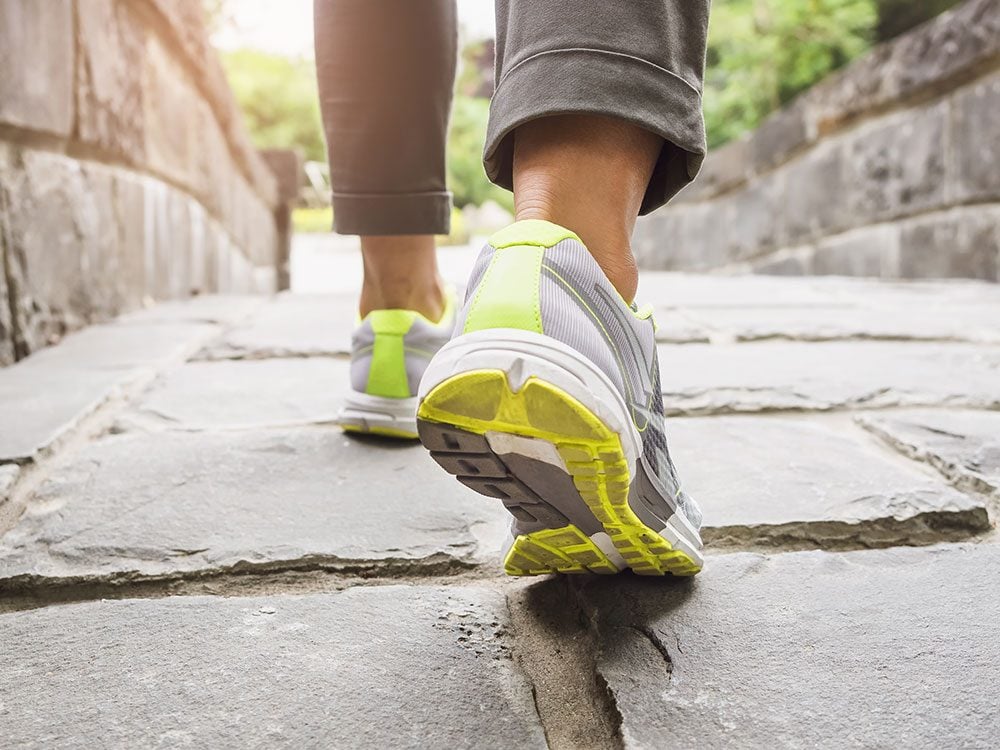
fsd
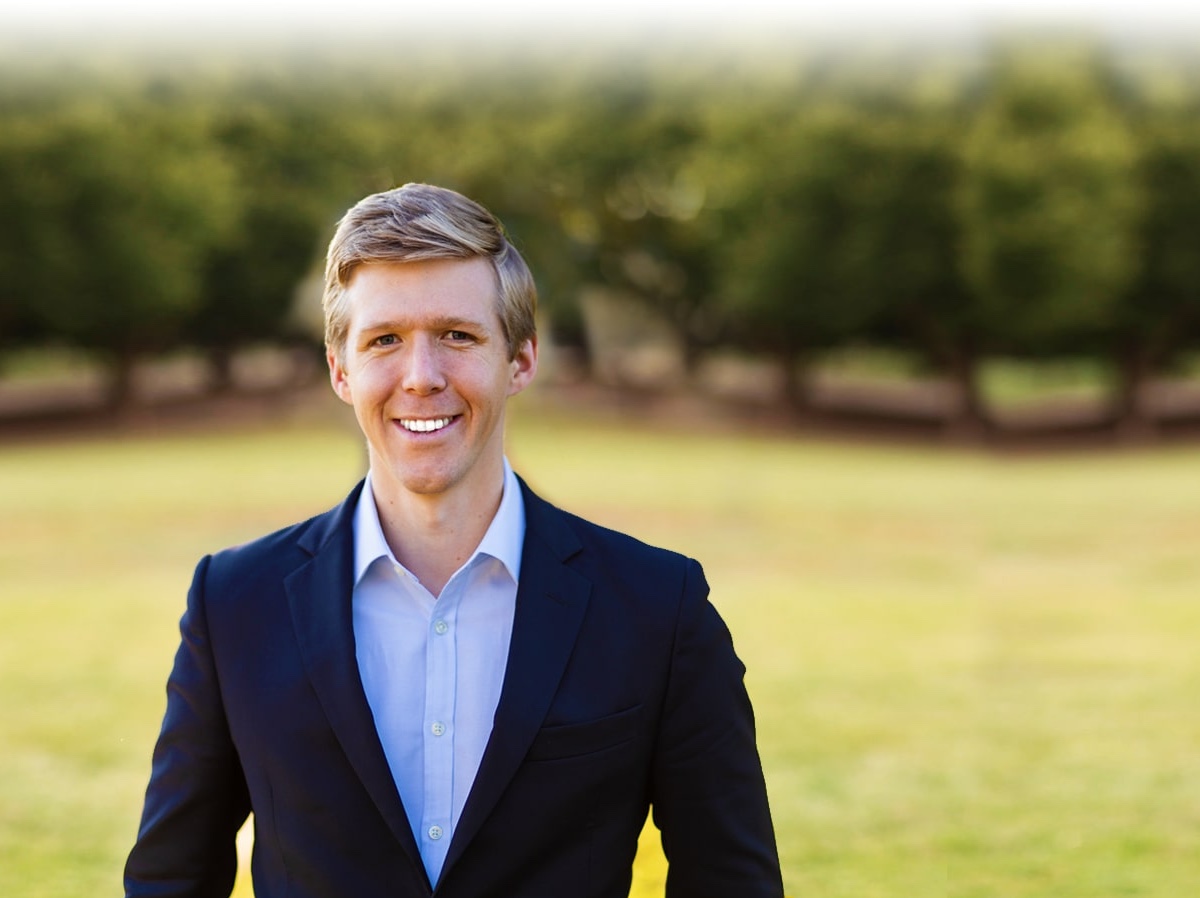
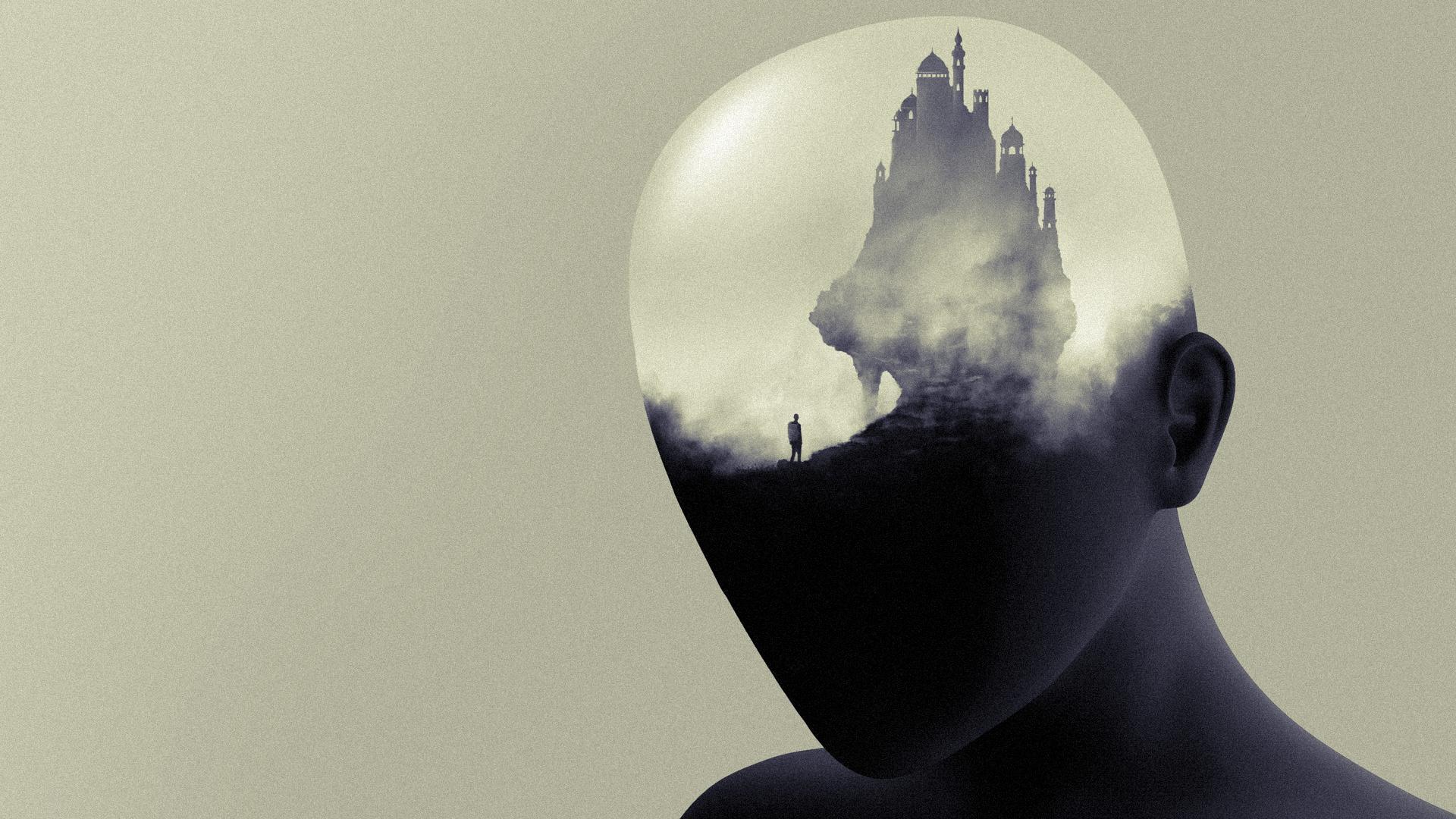
What if you had the chance to be mentored by two world-class leaders in Age Reversal Medicine AND receive life-saving diagnostic testing and life-changing treatments that are rarely accessible?
The Brain Rejuvenation Retreat is found no place else. Ben Greenfield and Regan Archibald are combining their knowledge and expertise in longevity, peptides, and fitness to give you the chance to experience a complete health makeover. Their insights will propel you forward on your path to optimal health and vitality.

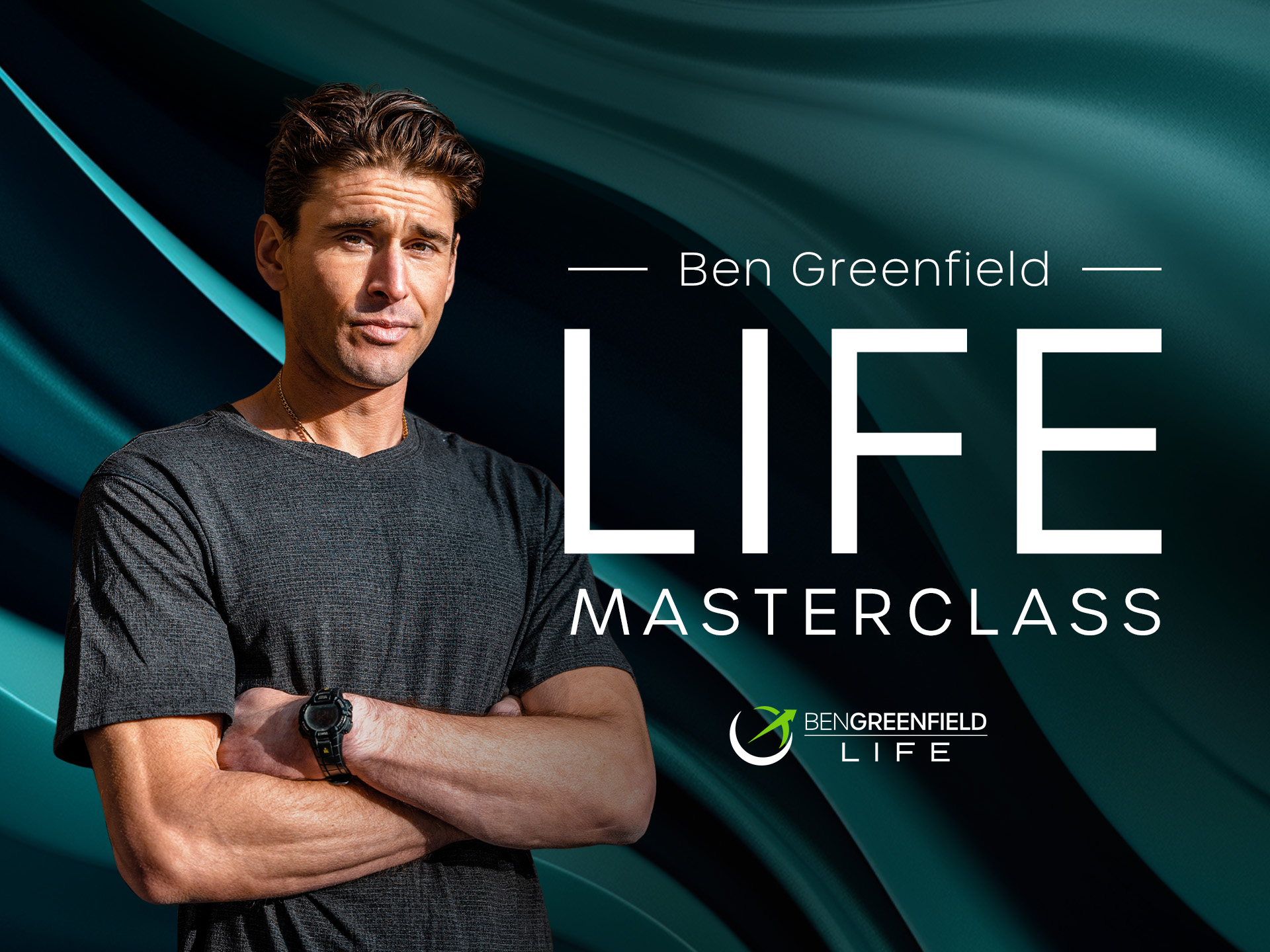
This is event description
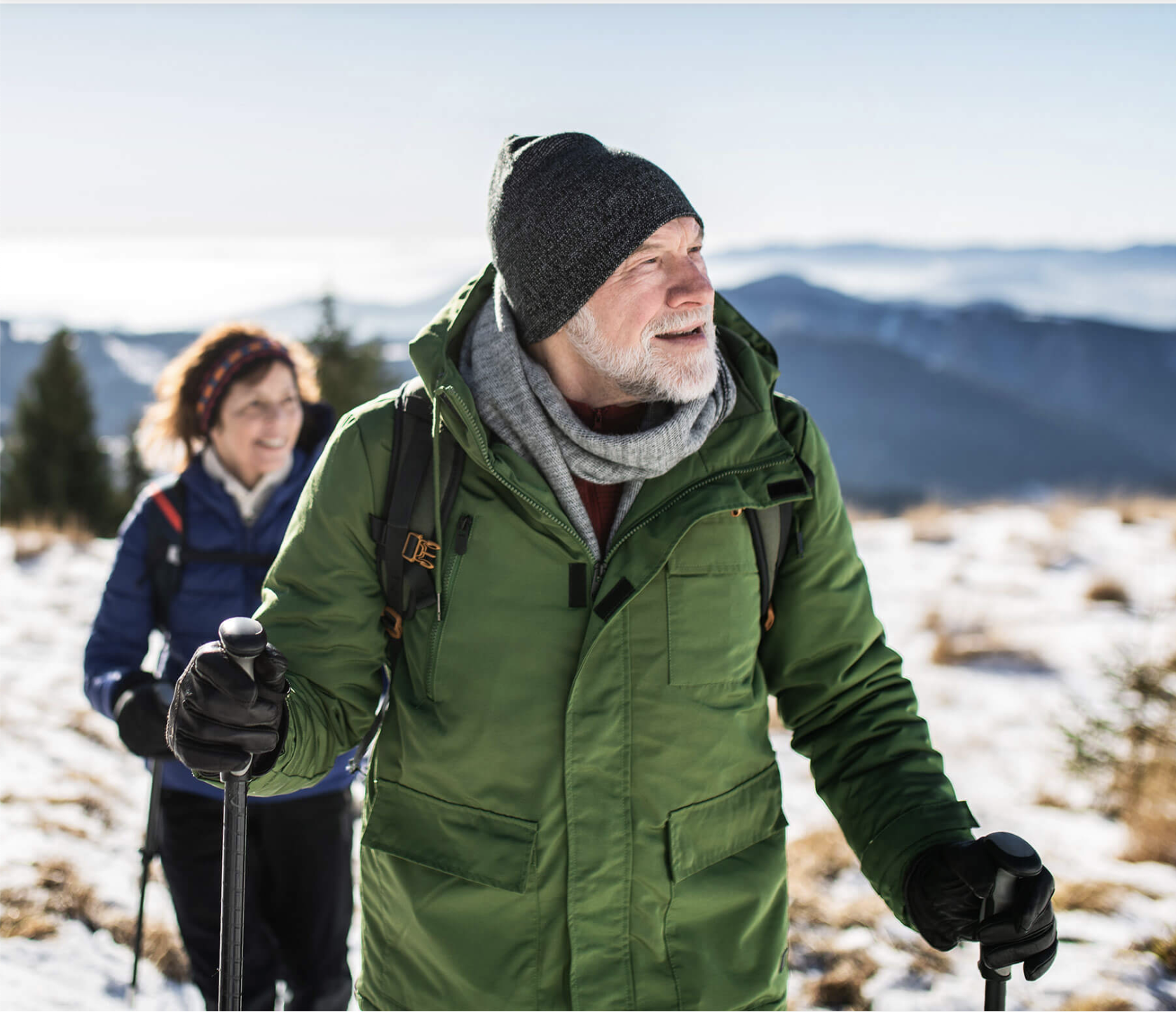

Join us as we learn from the experts in longevity – including those who understand the aging process and the mechanisms that can slow or halt it – and discover what you can do now to look and feel younger and extend your healthy life span. Why live longer if you don’t have health, look and feel younger, have your mental acuity, purpose, fulfillment and great relationships? Thought leaders who drive the understanding of mental and emotional well-being will teach you how to achieve all of this and Live Beyond the Norms.


Discover how to extend your lifespan at our Unlock Longevity event! Listen and learn from the world’s leaders in regenerative medicine, and creating longevity in your fitness, health, beauty and energy levels.
What if our understanding of aging wasn’t a fact – but rather an option?
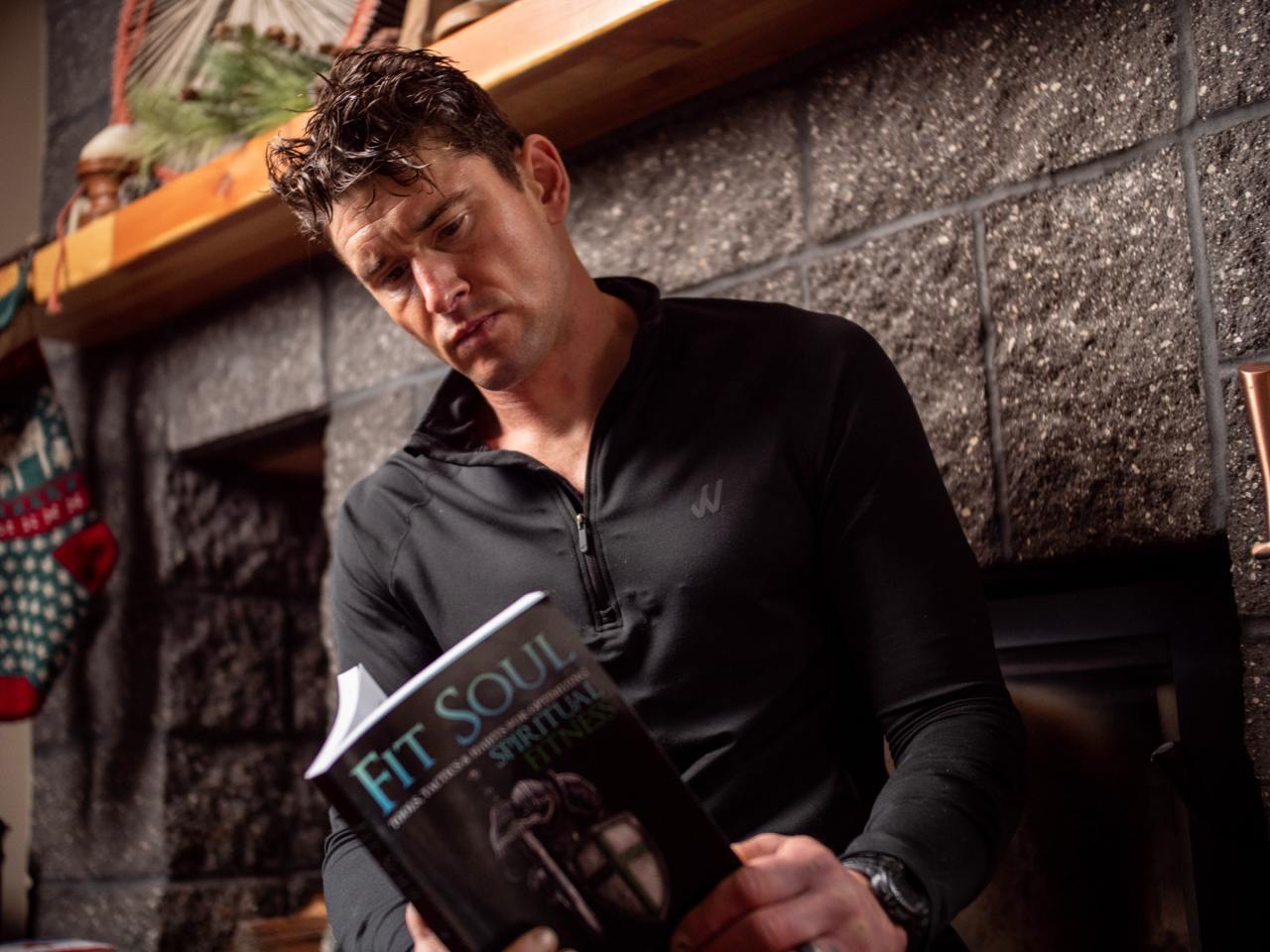
![]()
![]()

![]()
![]()
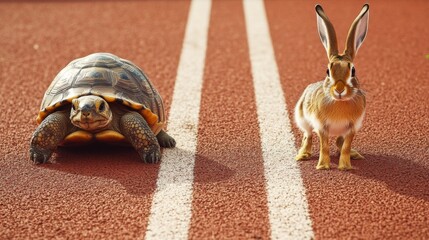
![]()
![]()


![]()
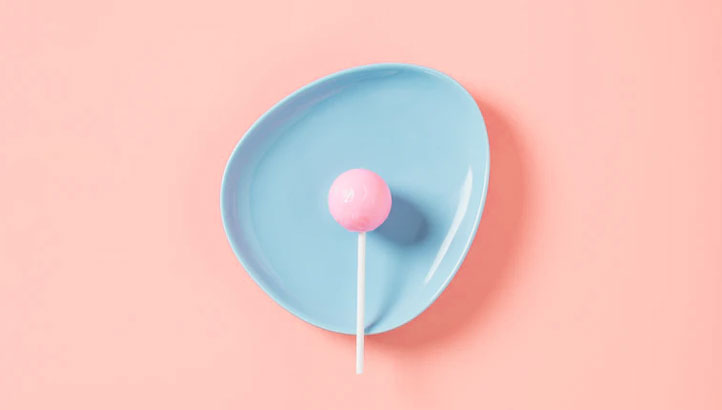

![]()


Welcome to the Ben Greenfield Life (BGL) Masterclass!
The Ben Greenfield Life (BGL) Masterclass serves as guidance to help you build a life design strategy inspired by Ben Greenfield's own life practices, helping you make the most of your available time and resources to build the life, body, career and relationships you want, and to leave a legacy you would be proud of.
It’s not about conforming to the precise structure (schedule, environment, or protocols) of Ben’s current lifestyle to mimic exactly, but to use it as a framework, or template checklist to follow when setting up your own life practices.
The course is structured to help you identify barriers, and your biggest weaknesses that prevent you from making the most of your available time and resources.
Going from where you are now, to a life-practicing hero involves routine practice, ad-hoc adaptation, and periodic redesign.
By the end of this course, you’ll possess the ability to confidently design and implement your own BGL-inspired life-practice map to help you master all six major areas of life.
You will arrive to a state in which you know (according to your BGL-inspired life-practice map) you’re doing everything you possible can to become your most productive (time), resourceful (nature), boundless (body), wise (mind-spirit), impactful (people), and wealthy (assets) self at every level of development or life-stage.
Throughout the course Ben will share a bunch of super helpful life optimization tools, tips, tricks and strategies, and show you how to use what you’ve learned in your own life.
Ben’s vision is for you to become your best self, so it’s important to make use of all the resources, assignments and quizzes provided so you don't miss out on important information.
This course is for those who, like Ben Greenfield, desire to:
By discovering and following Ben Greenfield’s strategies and teaching, you will be fully educated, equipped and inspired to live your own life with maximum purpose and vitality, secure in the knowledge that everything you do, has a clear sense of direction and leads to a preplanned desired outcome.
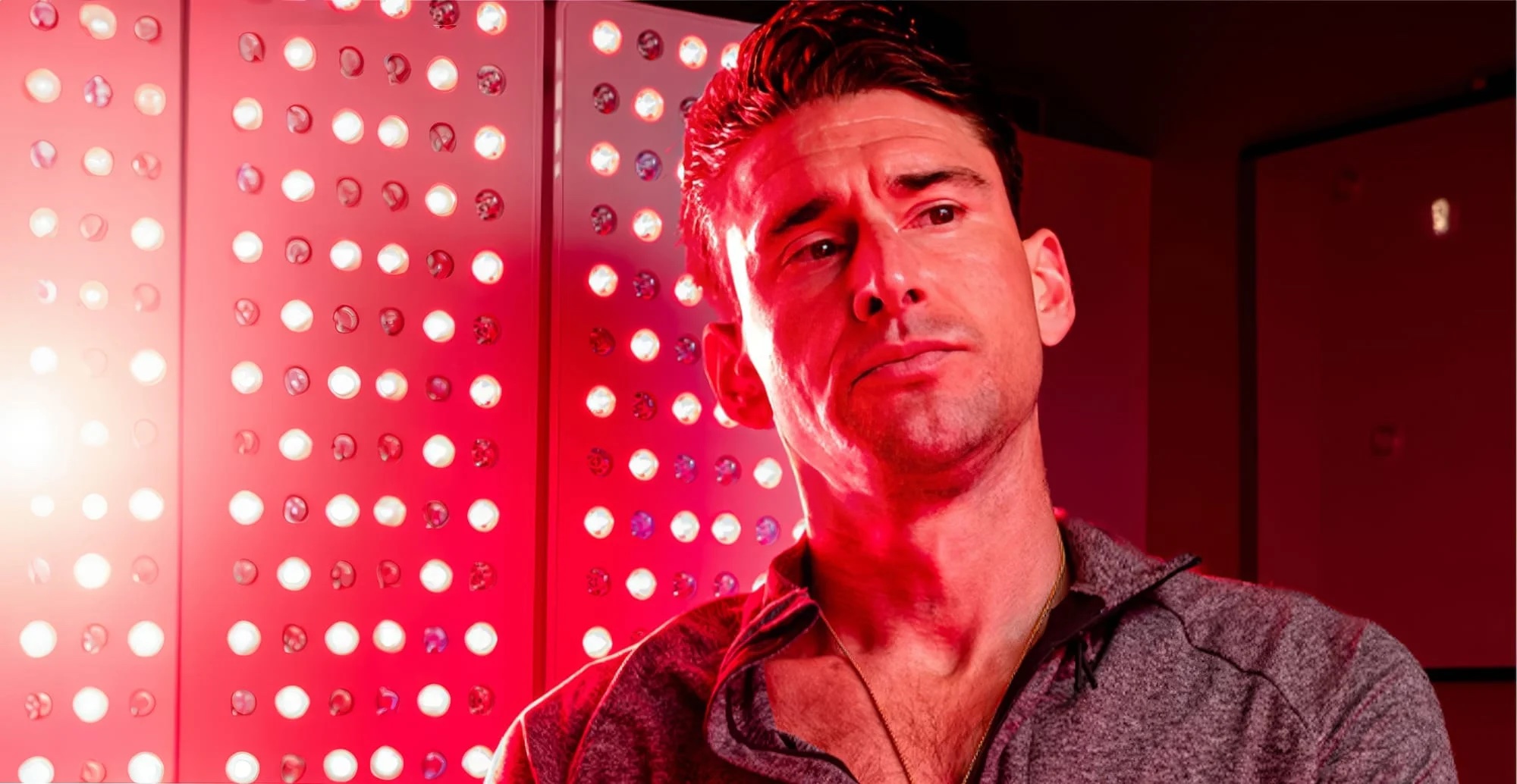
Ever wonder if simple daily activities could drastically improve your body's detoxification? Join Ben Greenfield, a leading figure in biohacking, as he unveils his revolutionary approach to maintaining peak wellness through everyday detox. This video isn't just about eliminating toxins; it's about empowering you with knowledge and practices to rejuvenate your body and mind.
In this video, I share:
🤸 Why Is Jumping Up and Down Your Secret Wellness Weapon?
Discover the surprising science behind the lymphatic benefits of rebounding on a trampoline and how just five minutes a day can significantly aid detoxification and inflammation reduction.
🌬 Can Breath Work Really Detox Your Body?
Learn how specific breathing techniques can enhance your body's detox pathways and Ben's top app recommendations for mastering breath work that supports overall health.
🔥 How Does an Infrared Sauna Deepen Detox?
Why infrared saunas are superior for detoxification, penetrating deeper into tissues to flush out toxins.
☕ Are Coffee Enemas Effective for Detoxification?
Why Ben incorporates coffee enemas into his weekly routine and how they can benefit your gallbladder and colon health.
💧 How to Replenish Minerals Lost During Detox?
What strategies can you follow to ensure your body remains mineral-rich, especially when detoxing intensively.
🌟 What Advanced Detox Methods Can Tackle Serious Health Challenges? For those looking into deep detoxification, Ben discusses his recommendations for comprehensive programs and the transformative power of ozone therapy at home.
If you're looking to boost your detoxification efforts or incorporate biohacking techniques into your health regime, this video is a must-watch. It provides actionable insights and expert advice that you shouldn't miss. Discover how small, daily practices can lead to significant health improvements, and take charge of your well-being now!

Cold plunging has become popular thanks to its powerful benefits, like easing anxiety, burning fat, reducing inflammation, and boosting mental clarity. But you don't need fancy equipment to reap the reward of cold thermogenesis. In this video, Ben Greenfield reveals his top cold exposure hacks for every budget and price point. Whether you are a cold plunge newbie or a seasoned veteran, you will learn the top tips and tools to get the maximum benefits of cold therapy with the biggest bang for your buck.

Do you ever feel down during the dark, cold months of winter? Winter can be a magical season, but for many, it brings many challenges that can dampen our spirits and impact our overall well-being.
The lack of sunlight, shorter days, and colder temperatures can lead to Seasonal Affective Disorder (SAD), a type of depression that occurs during the seasonal change. This can manifest as low energy, moodiness, and a persistent feeling of gloom. Moreover, the cold weather can discourage outdoor activities, leading to decreased physical activity and social isolation, which only compounds the problem.
So, how does one navigate these winter woes?
In this must-watch video, Ben Greenfield, a master of biohacking, shares groundbreaking strategies for naturally enhancing mood and beating Seasonal Affective Disorder (SAD).
Through a blend of natural remedies, lifestyle adjustments, and innovative technology, Ben offers a holistic approach to survive and thrive during the winter months.
What you’ll learn👇
🌱Find out how St. John’s Wort can be a game-changer for your mental health and why it's known as the "happy flower."
💡Discover how different forms of light therapy can mimic the sun's benefits and lift your spirits, even on the gloomiest days.
🧊 Learn about the surprising benefits of heat and cold therapy.
🇫🇮Why are the Finns, living in one of the coldest countries, among the happiest people on earth?
🍽 Explore the essential role of healthy fats in brain health and which omega-3-rich foods can help you maintain a positive mood.
🚀 What Are the Best Gadgets to Fight the Winter Blues?
This video is not just about facing winter's challenges but transforming them into opportunities for personal growth and well-being. Whether utilizing natural remedies, adjusting your lifestyle, or integrating cutting-edge technology, Ben Greenfield's strategies are designed to empower you to take control of your mood and overall health during the colder months.
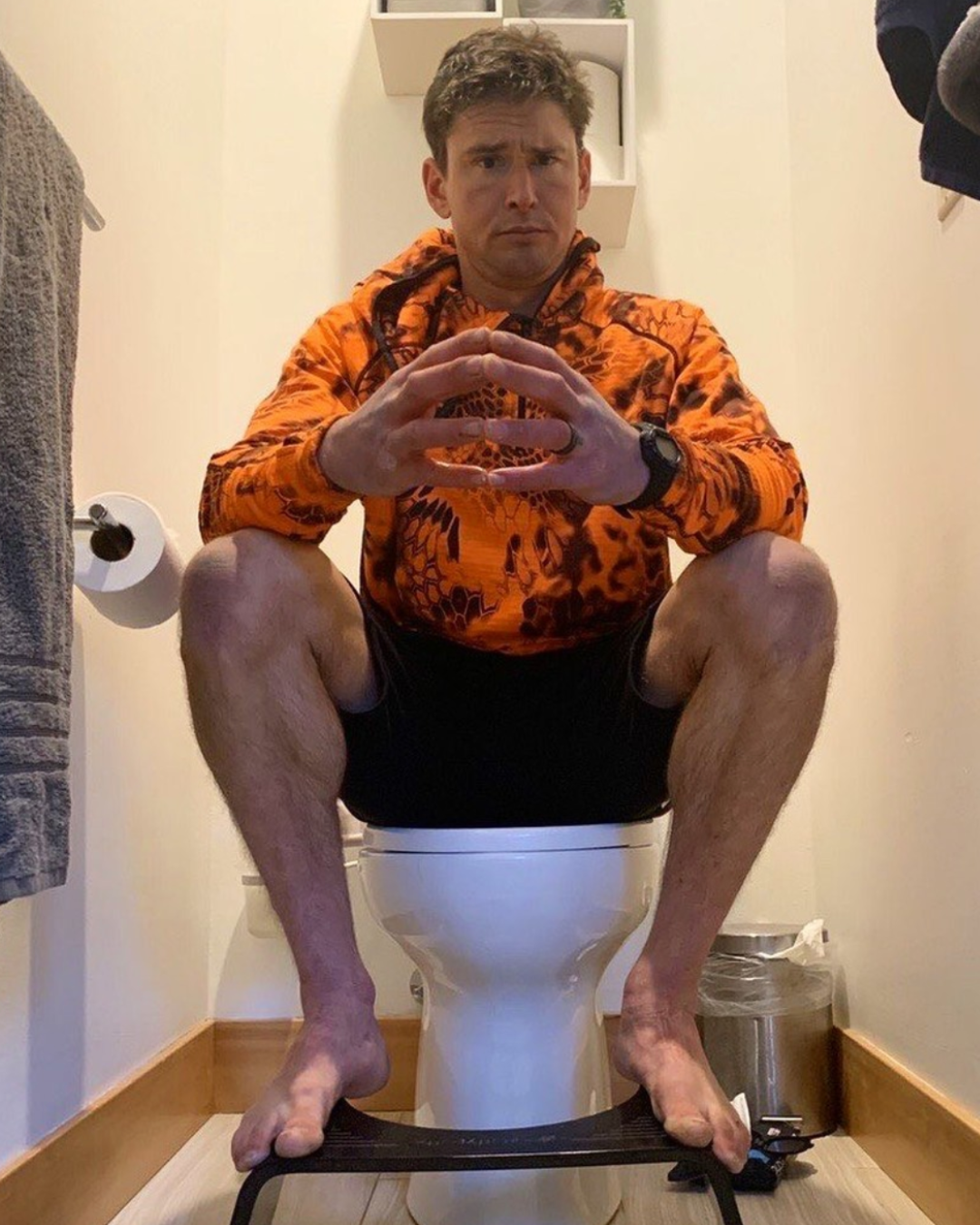
This is a test video about gut health hacking. This is part of the vignette series.
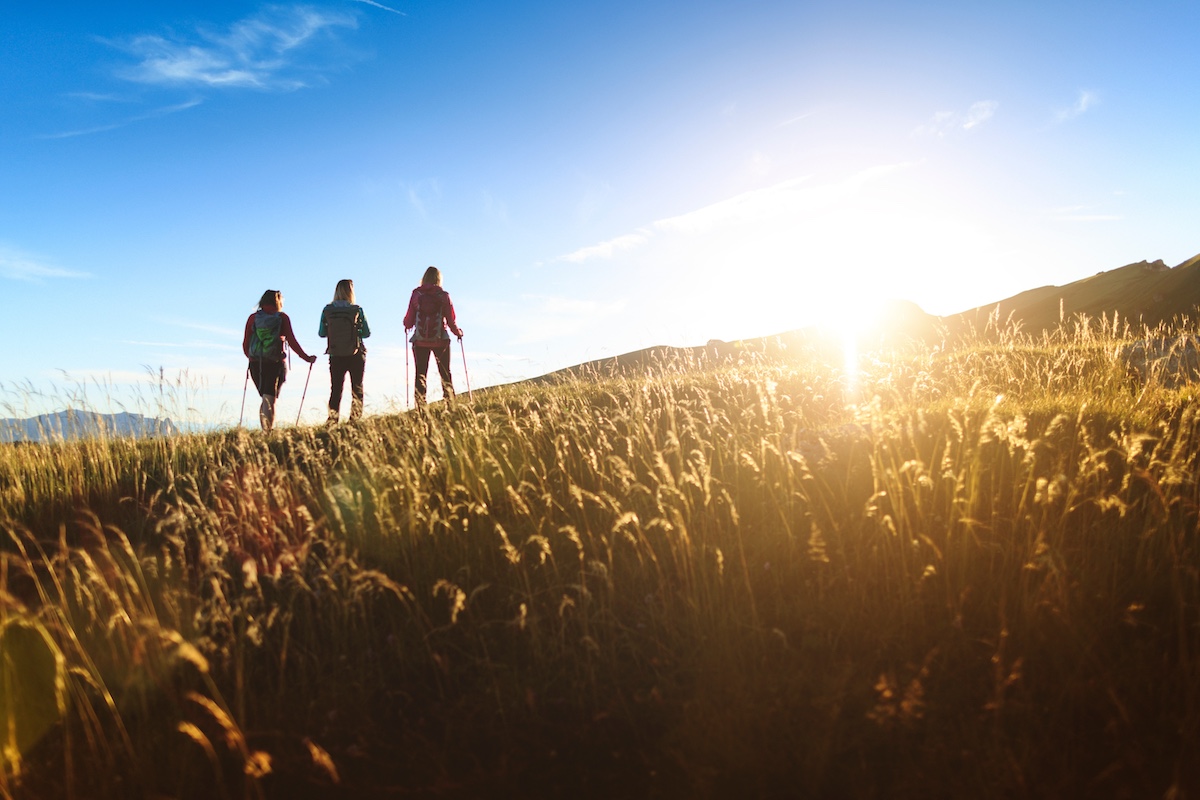

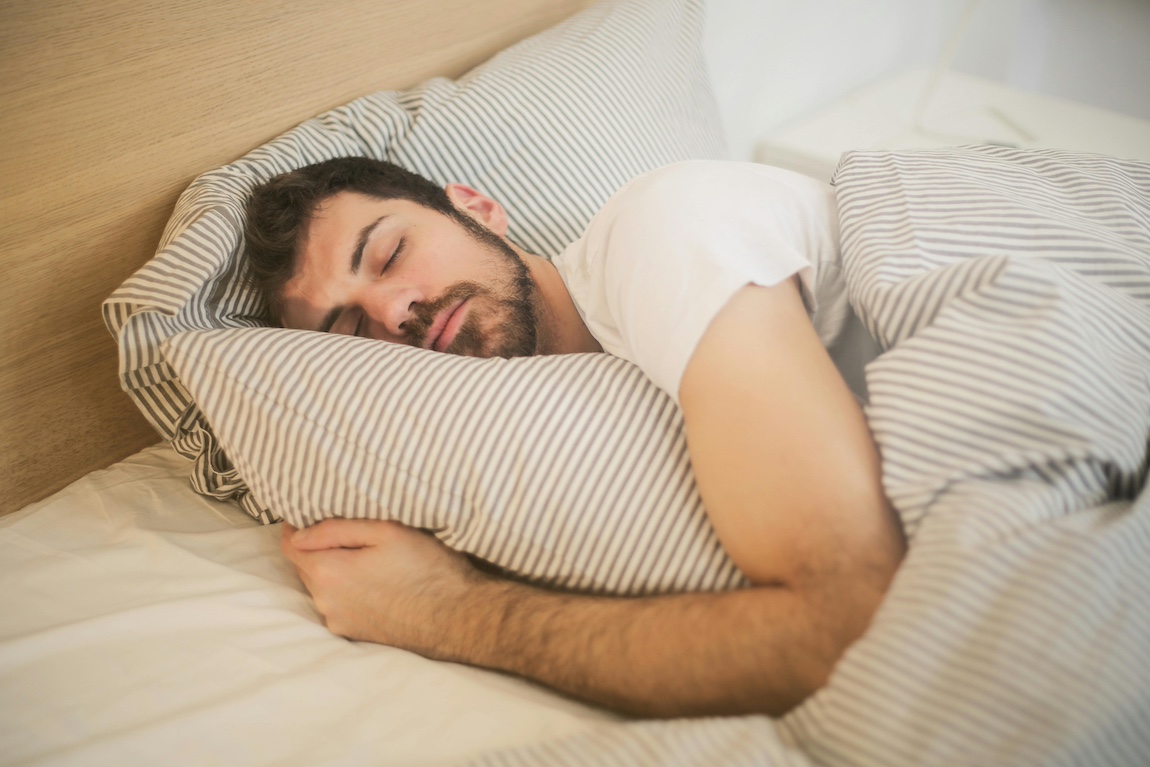
Modern life has disconnected us from our sleep — here are some ways to fix it.
After studying sleep for 10 years as a PhD in Cognitive Psychology, I’ve seen this disconnect first hand. People should understand and talk about their sleep like we talk about our diet and exercise.
But we live in a society that admires the sleep-deprived workaholic and disregards the fully rested and more thoughtful among us. It can be hard to focus on our sleep health, so I’ve compiled 10 main takeaways from my decade in the sleep world. Hopefully these tips will help you improve the quality of your sleep, your health, and your overall well-being.
1) Don’t underestimate the Circadian Component. People generally have an idea about how much sleep they need (called the homeostatic component of sleep). For example, I know I need about 8 hours. But people often know little about their individual internal 24-hour clock, aka the circadian rhythm. Here’s what you need to know. Everyone has a 24-hour cycle that is impacted by this weird German word called zeitgebers. Zeitgebers are environmental cues that impact our human physiology. The most relevant zeitgeber to sleep is natural sunlight. Sunlight penetrates photoreceptors in the eye, even when the eye is closed. This sends a signal to a place in the brain called the suprachiasmatic nucleus (my favorite word in the English language by the way). The suprachiasmatic nucleus impacts the release of melatonin and a whole slew of other neurotransmitters. This system, known as the circadian rhythm, impacts everything from your fatigue level throughout the day to your immune system. It explains that feeling of being wide awake at a certain time in the morning, sleepy after that afternoon lunch, and really tired at 3 in the morning. Everyone has their own unique circadian component, which can be shifted forward or backward.
2) The main problem is that we aren’t getting enough sleep. Differences between people aside, the main societal problem when it comes to sleep is that people are just not getting enough of it. I don’t need to read off the stats, everyone knows those people in your lives that skate by on 5–6 hours of sleep, or sometimes even less. (Or, that person might be you!) Getting such little sleep is pretty unhealthy: It negatively impacts literally every organ in the body, and chronic sleep deprivation can decrease your life expectancy by as much as 5 years.
3) There are 2 major causes for trouble falling asleep and staying asleep. After interviewing people with sleep problems I’ve noticed that they generally fall into two categories: 1) People who can’t sleep due to external environmental factors and 2) People who can’t sleep due to internal factors. Ways to address external sleep disturbances can be things that are as simple as: getting a more comfortable bed, closing your blinds at night to prevent light exposure, and wearing earplugs so your neighbor’s snoring isn’t so bothersome. Internal sleep disturbances relate to repetitive or anxious thoughts close to bedtime. This can be more effectively addressed by following good sleep hygiene, associating your bed with sleeping, and following relaxation or meditation techniques.
4) Don’t make too big of a deal about sleep cycles (ditch the alarm if you can). A lot of apps out there claim to impact your sleep cycle by doing things like waking you up in a lighter sleep stage. But as someone who has made apps like this, it’s not actually the best approach to getting more energy throughout the day. Even light sleep is regenerative. So instead of trying to “beat” your sleep by waking up in a lighter phase, you should probably just get more sleep. Plus, deep sleep decreases as the night progresses. If you are getting a healthy amount of sleep, it won’t make much difference if you wake up 15 minutes before or after your alarm clock. Getting more sleep isn’t possible for a lot of people, but it’s better to sleep more than to rely on sleep cycle-based alarm clocks.
5) People are different, but not that different. Each individual has their own unique Circadian Component and optimum sleep lengths. That being said, about 90% of us need between 7–8 hours of sleep. Circadian differences can be more dramatic because they are entrenched by your habits and impacted by your external environment. You probably have a sense of whether you are a morning person or a night person. By exposing yourself to light earlier in the day and expending more energy in the morning than in the evening, you can theoretically shift your circadian cycle to be earlier — meaning that you will have more energy in the beginning of the day and less energy later in the day. If you always wanted to be a early bird, don’t lose hope! With a few easy tweaks, you can wake up earlier naturally and with way more energy than you’re used to.
6) Not sleeping enough is unhealthier than you think. Every animal on the planet sleeps for a reason. Sleep deprivation causes increased blood pressure, insulin resistance, decreases in cognitive functions, weakened immune system, and more snacking on fatty foods. In the long-term, it’s linked with decreased life span, increased obesity, cardiovascular disease, Type II diabetes, and increases in the common cold and neurological disorders. We should view sleeping like we see eating well and exercising: vital parts of a healthy lifestyle.
7) It’s not just light in the night, it’s light during the day, too. Let’s go back to the Circadian Cycle again. Remember that it is impacted by light? That’s why everyone is always telling you about how you shouldn’t be around screens close to bedtime. Screen exposure before bed is a source of sleep disruption. But there is also something else that you ought to think about that is related to this process. Light exposure during the day also helps entrench your circadian rhythm. Sitting in an office all day disrupts our Circadian Cycle. The artificial office light tricks our brains into thinking that it isn’t actually daytime. By getting outside into natural light as much as possible during the daytime, we can help reorganize our body’s response to light.
8) Being tired makes you grumpy and insensitive. Did you know that having a sense of humor is actually a higher level cognitive capacity? Since sleep deprivation impacts your cognitive faculties, it actually makes you have a worse sense of humor. Losing your ability to empathize and taking more risks also increases with sleep deprivation. Sadly, it seems that our society today is suffering from these symptoms as a whole. Maybe a lack of sleep is to blame.
9) Drugs are usually not the answer. Drugs, like Ambien, are almost never a good option. A lot of people do report being able to fall asleep with drugs or alcohol, but there is one thing to keep in mind when evaluating your sleep: We are really bad at evaluating our own sleep. While you might perceive that you are falling to sleep faster, these drugs can impact the quality of your sleep. Even though you might get more sleep, your sleep is less rejuvenating. Over-the-counter like Melatonin don’t have these sorts of negative effects, but based on my research, many people don’t find Melatonin very effective. It might have a lot to do with the time of day that you take the Melatonin. If you really want to improve your sleep, start with behavioral solutions, such as sticking to a consistent bedtime and wakeup time, before taking a drug. For insomnia, behavioral solutions have been shown to be more successful than all other solutions, and don’t have the negative consequences of drugs.
10) Sleep is a pathway that connects us with our subconscious. Lucid dreaming, or being able to control your own dreams is a skill that you can develop. I’m not an expert yet, but there are a bunch of techniques that can be used to help people take control of their subconscious. Everyone knows about the concept of “Inception” from the movie, but it actually is possible and science is helping to pave the way.
Article courtesy of Dr. Dan Gartenberg. For more sleep tips and insights, you can explore sleepspace.com.
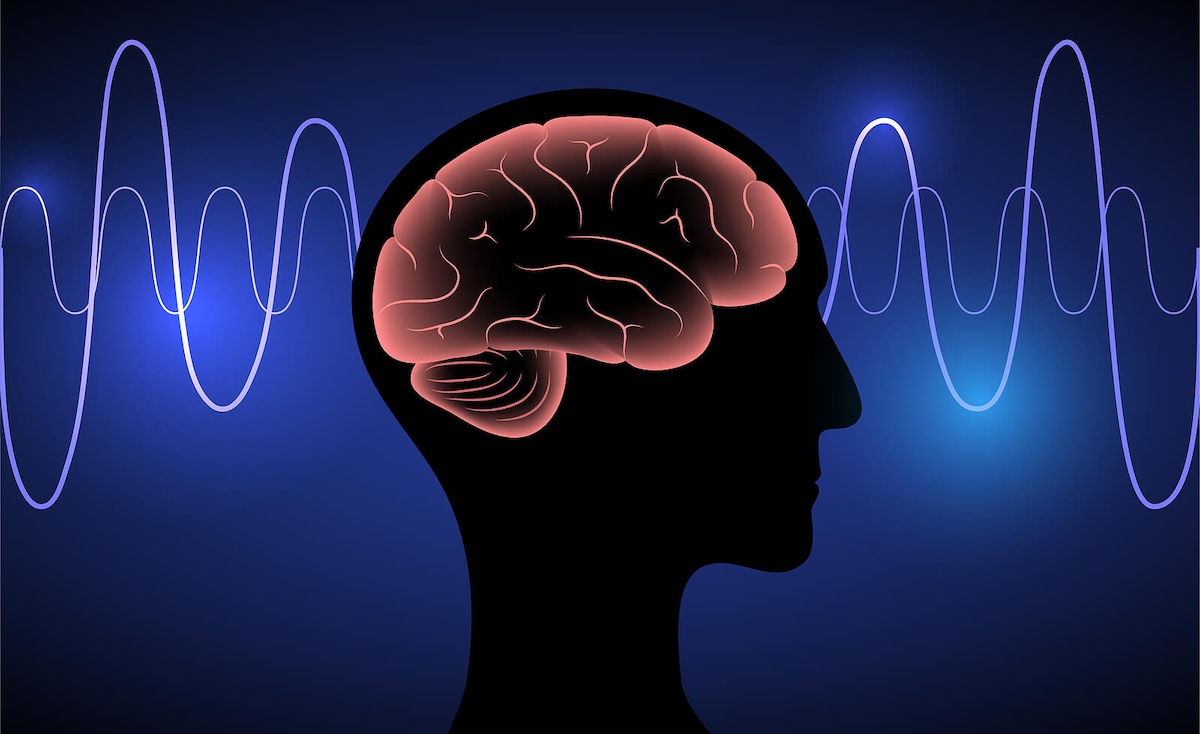
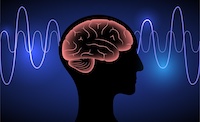
What if I told you there was a therapy that could improve your sleep, your mood, your focus, and more - permanently?
"Too good to be true?"
How about, "Yea, right?"
Or maybe, "No way?"
Neurofeedback can do all this and more.
How?
What is neurofeedback? Have you ever heard that you are only using a small portion of your brain? There's a great deal of truth to this.
As we experience life, our brain is constantly gathering and assimilating information. What does it do with that information? It does its best to respond to our external world in a way that meets our needs.
This creates what we call "behavior." For example, you feel thirsty, so you go to the kitchen and pour yourself a glass of water from a large bottle of water.
Sounds boring and mundane, right?
But the truth is, this simple action is the sum of numerous complex decisions you made over the course of your life.
First, you didn't go to the tap. Second, you didn't go to the refrigerator to get a drink from a pitcher filter. Third, you didn't get your water from a countertop or under-sink filter, like a Berkey filter or an under-sink reverse osmosis filter.
Your behavior emerged from what you had read, heard, and seen about water, water filters, and more.
You used different parts of your brain to do this. Stated a different way, different parts of your brain responded to the information you were exposed to, and you made a series of decisions in response to that information that led you to buy bottled water to drink, rather than any of the other options.
Just another day of being human, right?
Yes, but your most important decisions are not things like "what kind of water should I drink?" They are things like, "how do I respond to my angry family member?" Or, "how do I respond to this angry, combative stranger?"
I was introduced to neurofeedback by Jim Laird this past summer. Jim had learned about it through a friend who had found it helpful in recovering from wounds he sustained in combat.
How does neurofeedback work? First, electrodes are attached to your skull and a QEEG is taken. Someone trained in neurofeedback then interprets the QEEG and recommends a treatment protocol.
What does the treatment protocol do? What it is supposed to do is to wake up areas of the brain that have been shut down, due to trauma, lack of stimulation, or toxic exposures. All of these things are part of daily life.
What happens when you do this?
Imagine parts of your brain coming online like the different parts of an organism, a company, or a car. You become more efficient. You sleep more soundly. You're able to focus for longer periods of time. You're able to tolerate annoyances and distractions better. You are more patient, thoughtful, and effective.
Too good to be true?
That was my experience. I've had a few patients tell me they did not have such a profound effect.
What else was I doing at the time?
I've already alluded to mineral balancing in my last post.
I feel like a broken record in recommending LifeWave patches, which I've been using continuously since this summer.
I bought a sauna from SaunaSpace and actually started to use it this past year.
What made the difference?
All of them together is my answer. Which is why we now include the LifeWave patches in our executive physicals, we often refer for neurofeedback, we test hair minerals quarterly, and we recommend sauna to almost everyone.
And I can honestly say we are getting better and better results with this multi-disciplinary system.
Who do I recommend neurofeedback to?
Neurofeedback can help with all of these things and more.
I almost feel like I'm writing an advertisement for it, but honestly I saw a huge improvement in my cognitive capacity from neurofeedback. I think I can safely say that it changed my life. I know I'm not the only one.
I don't recommend neurofeedback alone. If you look at the literature, the studies on neurofeedback show "mixed" results.
I'm convinced this is due to lack of proper execution of what we call The Fundamentals of Wellness. Which is why we have a course on that, plus coaching.
Have you ever tried neurofeedback? What was your experience? If you're comfortable, let me know in the comments.
Until next time, be well,
Dr. Stillman
Article courtesy of Dr. Leland Stillman. For more actional health tips and advice for true healing, you can explore Dr. Stillman Uncensored on Substack.
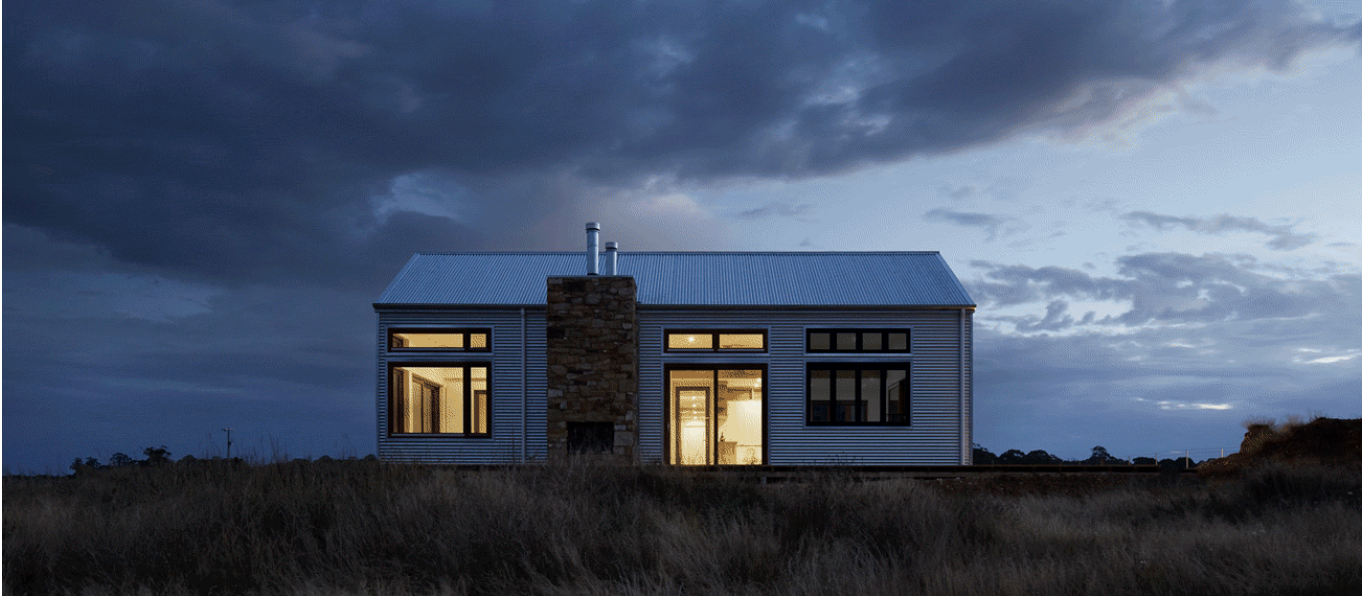

When I think about sleep enhancement, I think about creating the perfect sound, light, and temperature environment. When these factors are combined together we can create the smart bedroom of the future and dramatically improve public health. Light has been particularly well established as a tool that impacts sleep, particularly regarding the finding that blue light at night keeps us awake. But light and sleep have an ancient and well studied relationship through the role that light plays in controlling the release of melatonin. After all, every single organism on the planet has some type of circadian rhythm that respond to light.
Recent developments in technology have made it easier for developers and mad scientists like me to answer questions like: can we change light via color, brightness, and hue at the right time to improve every human’s sleep? My friend Dr. Anne-Marie Chang did some of this foundational work around the impact that blue-light emitting technology has on circadian phase shift. So we know that lights can be harmful, but can they also be helpful?
To answer this question, my team at SleepSpace collaborated with my friend Sam Moore, director at LIFX smart bulbs, and the Google Nest team, including one of their collaborator scientists, Dr. Logan Schneider. We set out to discover whether lighting, when controlled by a smart assistant like Google’s, could help people with their sleep. We then integrated the LIFX technology within the SleepSpace app to create healthy wind down and wake up rituals.
There is always a tricky tension when it comes to technology and sleep because often times technology is the very cause of the problem. This is what Anne-Marie found. But perhaps with the right type of computer interaction, we can seamlessly control our lights to optimize our health, without the tech being a distraction or nuisance. Our theory is that lights that gradually fade out when you should go to bed and brighten when you wake up to an alarm over a 30 minute period will help people have better perceived alertness.
The reason a gradual smart light regime might positively impact daytime alertness is that fading out light reduces light exposure during the night-time, which provides signals to photoreceptors in your eyes that you should be awake, when in reality you should be winding down for bed. Light that gradually brightens in the morning could also act on these receptors to make people more alert in the morning and throughout the day. Moreover, this ritual of interacting with lights during your wind down and wake up could help train you to go to bed at more consistent times, which could help with your perceived alertness.
In order to be included in the study, participants could not be a shift worker and had to own a nest and at least 2 LIFX smart bulbs. Here is what we did to test out the impact of smart lights on 66 sleepers aged 18–68.
We recruited participants by offering them free devices in exchange for their participation in a 3-week study. We asked participants to fill out a digital sleep diary on the SleepSpace platform every day. Additionally, participants completed weekly surveys that have been validated to measure sleep quality, such as the open source PROMIS survey of sleep quality. Participants were also asked to track their sleep using the SleepSpace nearable sleep sensing technology or with an Apple Watch when the participant chose to wear the watch during sleep.
A good sham is needed to avoid a placebo effect in a study like this. In order to accomplish this, we want to compare lights in a condition that we think will be helpful, to a condition where we don’t think the lights will work but that the participant will still think that we are trying to help them using light. Running a study with light is more challenging than with something like a drug study where you can simply give someone a sugar pill in order to measure the difference in effect. In order to accomplish an effective sham we compared different light environments within a participant over a 3-week period that included: 1 week baseline followed by one week of either our Sham Condition or our Treatment Condition. We randomly assigned participants to either the sham or treatment on either week 2 or week 3.

Participants were instructed to interact with their Google Assistant 30 minutes before their bedtime and say: “Hey Google, set my all my lights to 50%.” This would turn their smart lights to 50%. Then when the participant indicated that they went to bed by pressing a button in SleepSpace, the lights turned off. In the morning, when the the participant indicated they woke up, we briefly popped the lights on at 1% brightness.
Participants were similarly instructed to interact with their Google Assistant 30 minutes before their bedtime, but say, “Hey Google, sleep all my lights.” This would gradually dim all the lights in the participants home over a 30 minute period. Then they were instructed to say, “Hey Google, wake my bedroom light at XX:XX AM.” This would gradually ramp up the light in their bedroom over a 30 minute period at their decided wake up time.
By manipulating the lights in this way, we could see if gradually dimming and brighting the lights at the best time to go to bed and wake up can improve sleep compared to controlling smart lights in a way that should not have an impact on sleep (the sham condition). By giving participants commands in both conditions that control their lights, we are able to compare the impact of the ideal lighting environments while factoring out the impact of making commands to Google at designated times. When the sham week started for participants, they were still under the impression that they were changing lights to improve their sleep, which addresses possible placebo effects.
We measured sleepiness using the PROMIS survey 4 times: onboarding, after baselines week, after sham/treatment week, and after the final sham/treatment week. I like to just plot everything first before we run statistics. In the below graph the dots represent every participant in the study and the lines represent the averages between conditions and over time.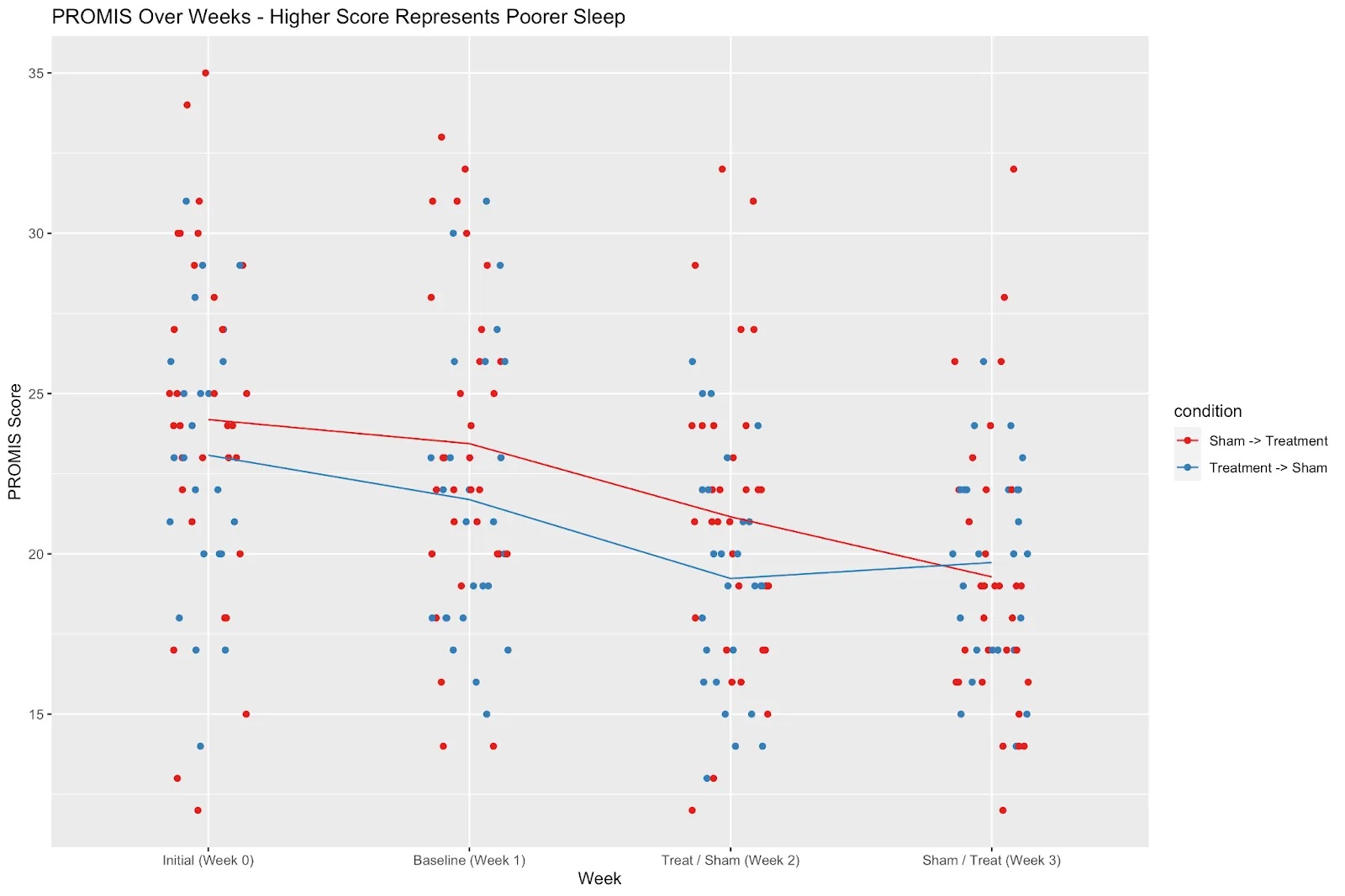
When Dr. Dan Roberts, CSO of SleepSpace showed me this data, I was super excited! PROMIS asks the participant about multiple aspect of the quality of their sleep, with lower scores indicating better perceived sleep quality. Some observations…
We ran a 2X2 within groups ANOVA with week as one variable (week 2 vs week 3) and condition as the other variable (sham vs treatment). We found a significant interaction between week and condition where the treatment condition had better perceived sleep quality than the sham condition (p < 05), driven by improvements in the third week of the study. This provides strong evidence that fading the lights gradually at your designated bedtime and ramping them up gradually at your designated wake up time can improve how you feel about your sleep.

What’s more is that participants in all the conditions improved their perceived sleep quality over the 3-week study. This suggests that the simple act of setting an ideal bedtime and wake up time and being more aware of these times can help anyone improve their sleep quality in as little as 3 weeks.
We plan to extend this finding to a larger population of individuals who suffer from insomnia and determine if changing the hue of the lights can further improve on sleep quality. Based on a combination of your sleep goals and your natural rhythms there is likely an ideal light environment that can help both healthy people and individuals who suffer from poor sleep. While technology often does more harm than good (i.e. the blue light emanating from your phone when you should be winding down for bed), at the end of the day, technology is just a tool. It can be used for good, and it can be used for evil. Maybe a smart home environment that takes the human into the center of the picture can finally create this reality where the tech does more good than harm.
We often don’t think about our lighting much when it comes to our sleep. Some quick hacks that I’ve personally found helpful around light exposure include:
Please drop me a note if you have any questions or have any interest in participating in one of our future studies. SleepSpace can help companies and individuals evaluate what works and what does not work when it comes to our sleep health. In todays age, it is often up to each individual to find the sleep environment that works best for them in order to improve their alertness, productivity, and well-being.
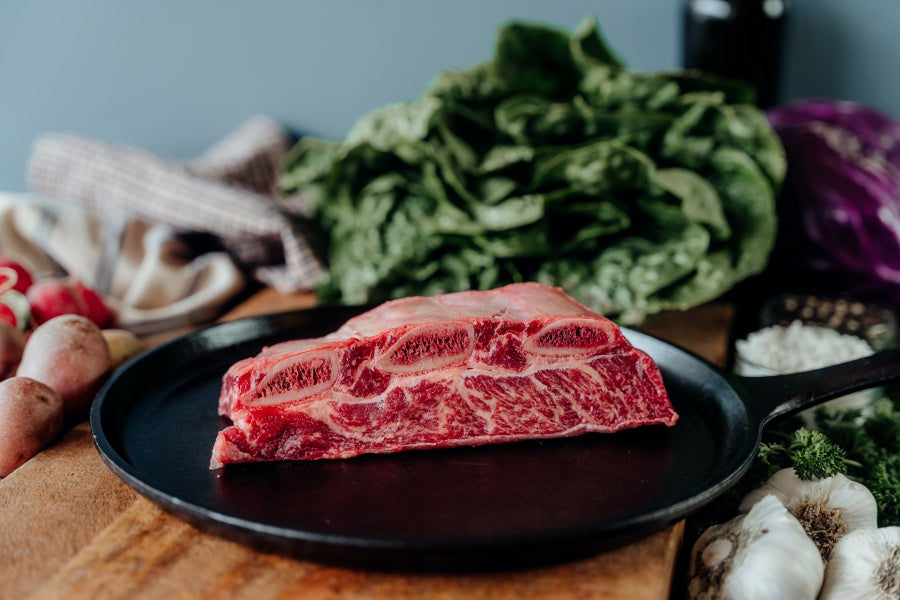
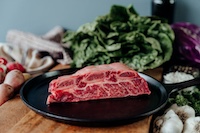
There’s no better way to enjoy your meal in a relaxed state than making a meal that requires little-to-no work at the end of a busy day.
Jessa and I are always looking for delicious ways to prepare food that will nourish us without requiring a great deal of effort after a packed day of writing, adventuring, gardening, unschooling, and everything else we do.
Since writing the Boundless Cookbook, I’ve discovered the time-saving magic of a pressure cooker, which is simply a sealed pot with a valve that controls the steam pressure inside. As the pot heats, the liquid inside forms steam, which raises the pressure in the pot. This high-pressure steam raises the boiling point of any liquid in the pot, which helps the food to cook faster, and promotes caramelization and browning in a way that creates surprisingly deep and complex flavor profiles of even the most difficult-to-cook or traditionally “tough” cuts of meat, such as short ribs.
These short ribs are the perfect meal base for a weeknight family dinner, which should always be taken in a state of relaxation and gratitude, because in truth, what could be more of a gift from God than sitting around your dinner table with loved ones?
This is a bonus recipe from Boundless Cookbook, a unique blend of modern mouthwatering food chemistry, traditional culinary tactics, and nutritional biohacking by Ben Greenfield. To purchase a copy, visit boundlesscookbook.com.
Keep this area empty if no references present.
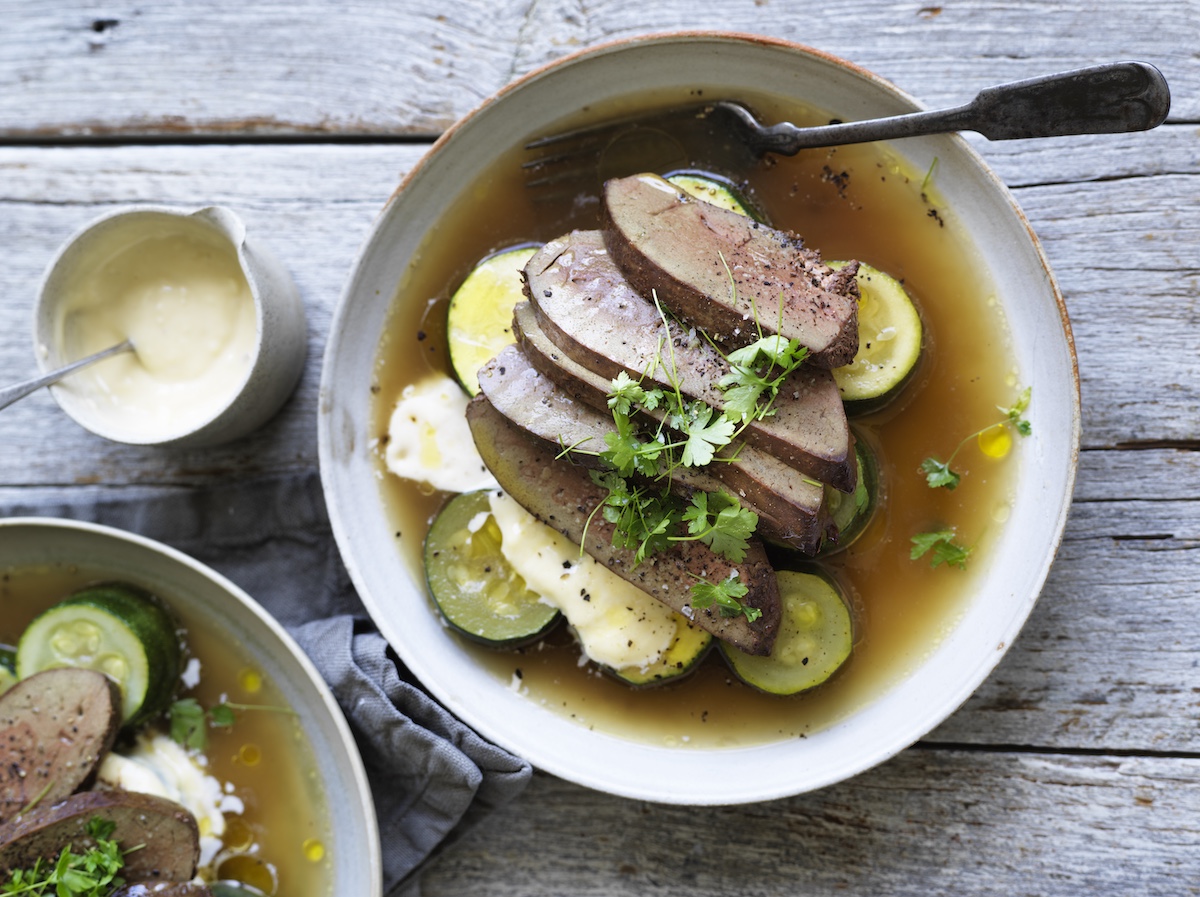
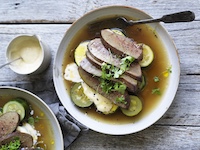
It wasn’t until I became a chef that I began to properly appreciate offal for the flavour bomb it is. Then along came my passion for health and my appreciation grew and grew, as offal really stands head and shoulders above all other ingredients in terms of health benefits. This very simple preparation highlights my two favourite healthy ingredients: liver and bone broth. I hope you love this dish as much as I do.
Dietary Notes:
May need to consider spices and onion content for very strict adherence to low FOD-MAP
Recipe courtesy of Pete Evans. For more nourishing recipes and wellness insights, you can explore peteevans.com.
Keep this area empty if no references present.

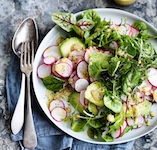
The secret to a good salad is often the dressing, and one of the simplest and most delicious is the classic seeded mustard vinaigrette. This dressing elevates simple leaves to the most extravagant salad. I like to use sorrel leaves for this recipe as we grow them in our garden at home, but feel free to replace them with any type of lettuce or green of your choice. Try serving with sashimi, grilled sardines, roast chicken or pork.
*Dietary Note: Omit or substitute honey for paleo, keto, and vegan.
Recipe courtesy of Pete Evans. For more nourishing recipes and wellness insights, you can explore peteevans.com.
Keep this area empty if no references present.
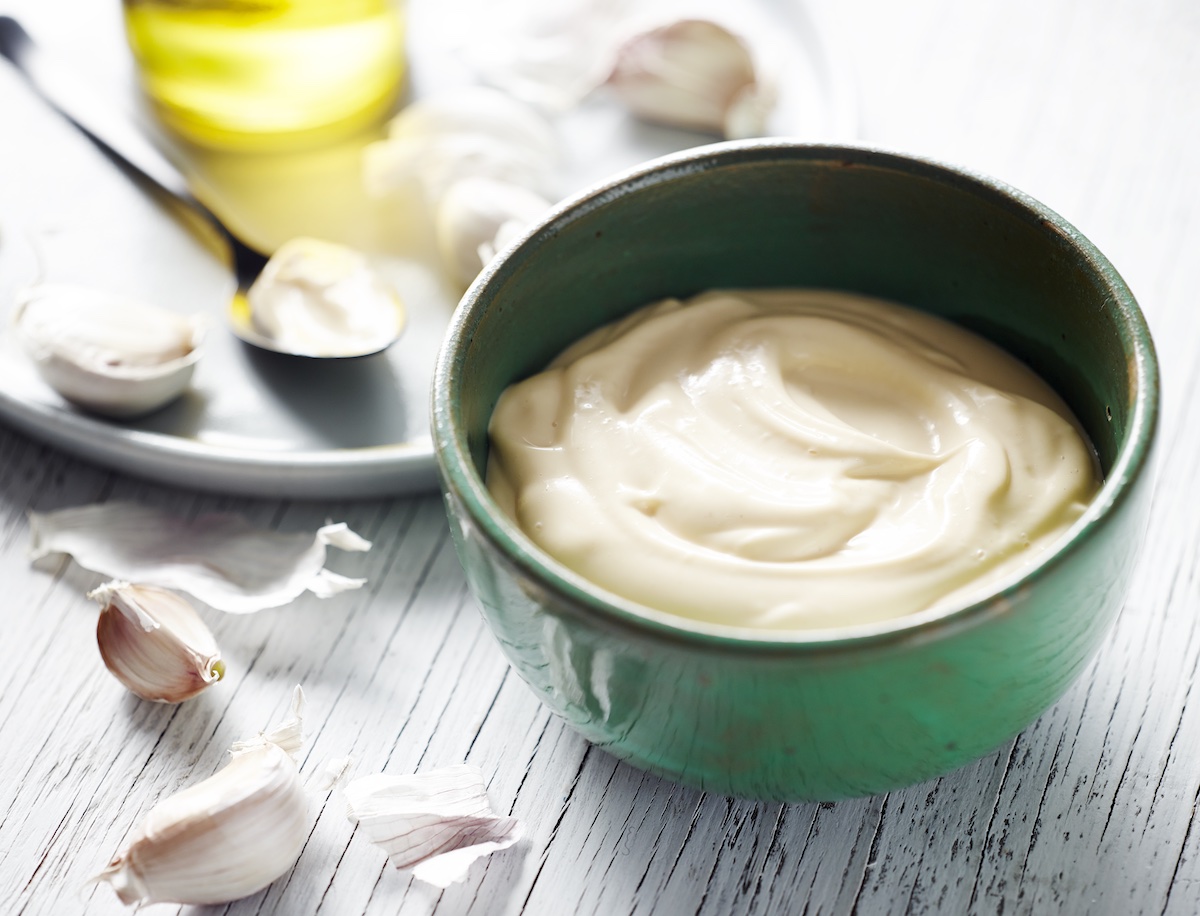
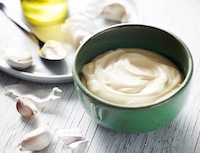
*Dietary Note: May need to consider garlic content for very strict adherence to Low FOD-MAP
Recipe courtesy of Pete Evans. For more nourishing recipes and wellness insights, you can explore peteevans.com.
Keep this area empty if no references present.
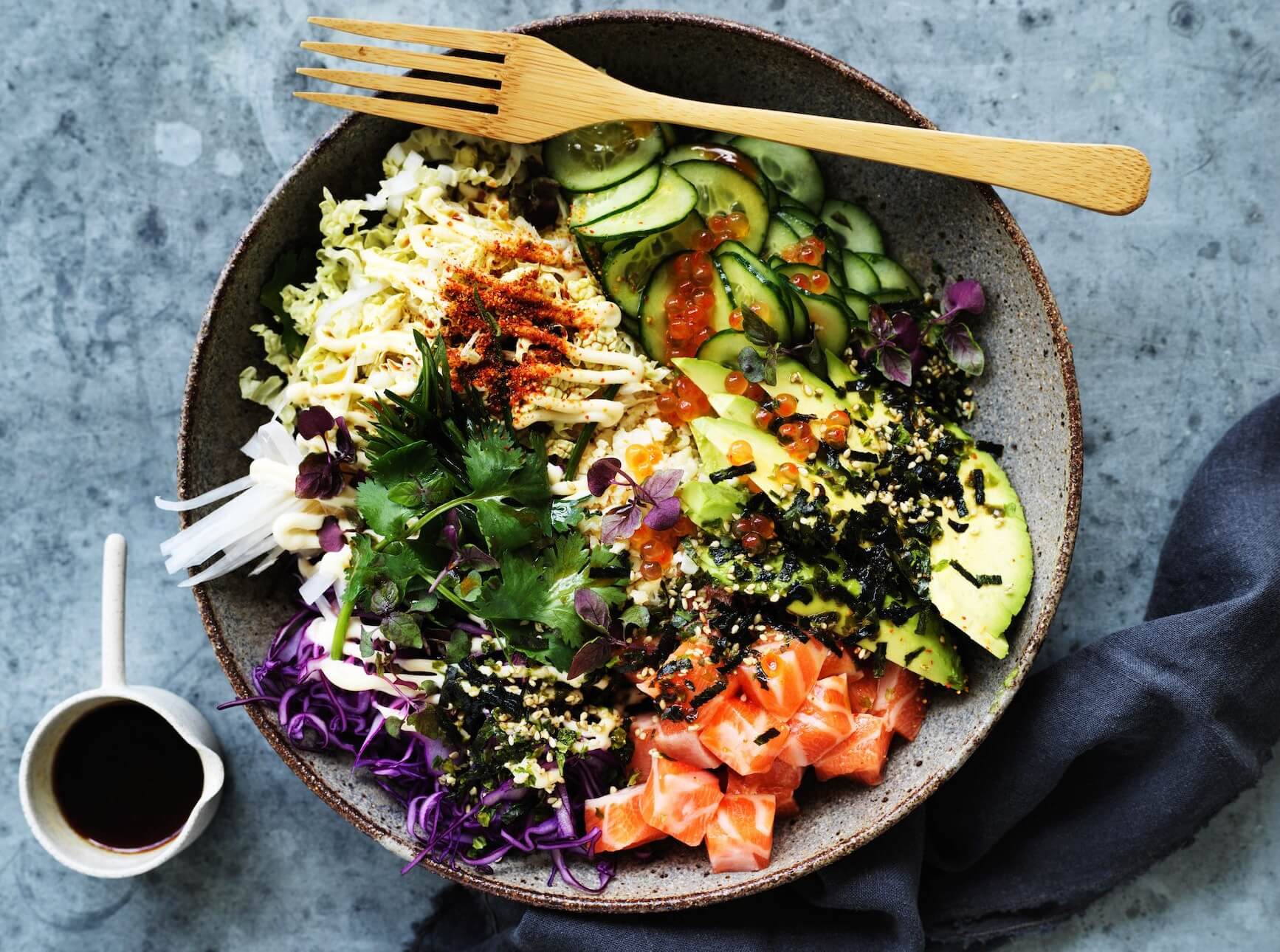
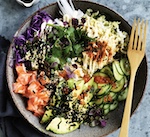
Poke bowls, which originated in Hawaii, have become very popular in Australia and New Zealand, which can only be a good thing when it comes to looking for healthy food options. Making poke is super easy and, here, I show you how.
*Dietary Note: Paleo if tamari is compliant with specific paleo guidelines
Recipe courtesy of Pete Evans. For more nourishing recipes and wellness insights, you can explore peteevans.com.
Keep this area empty if no references present.
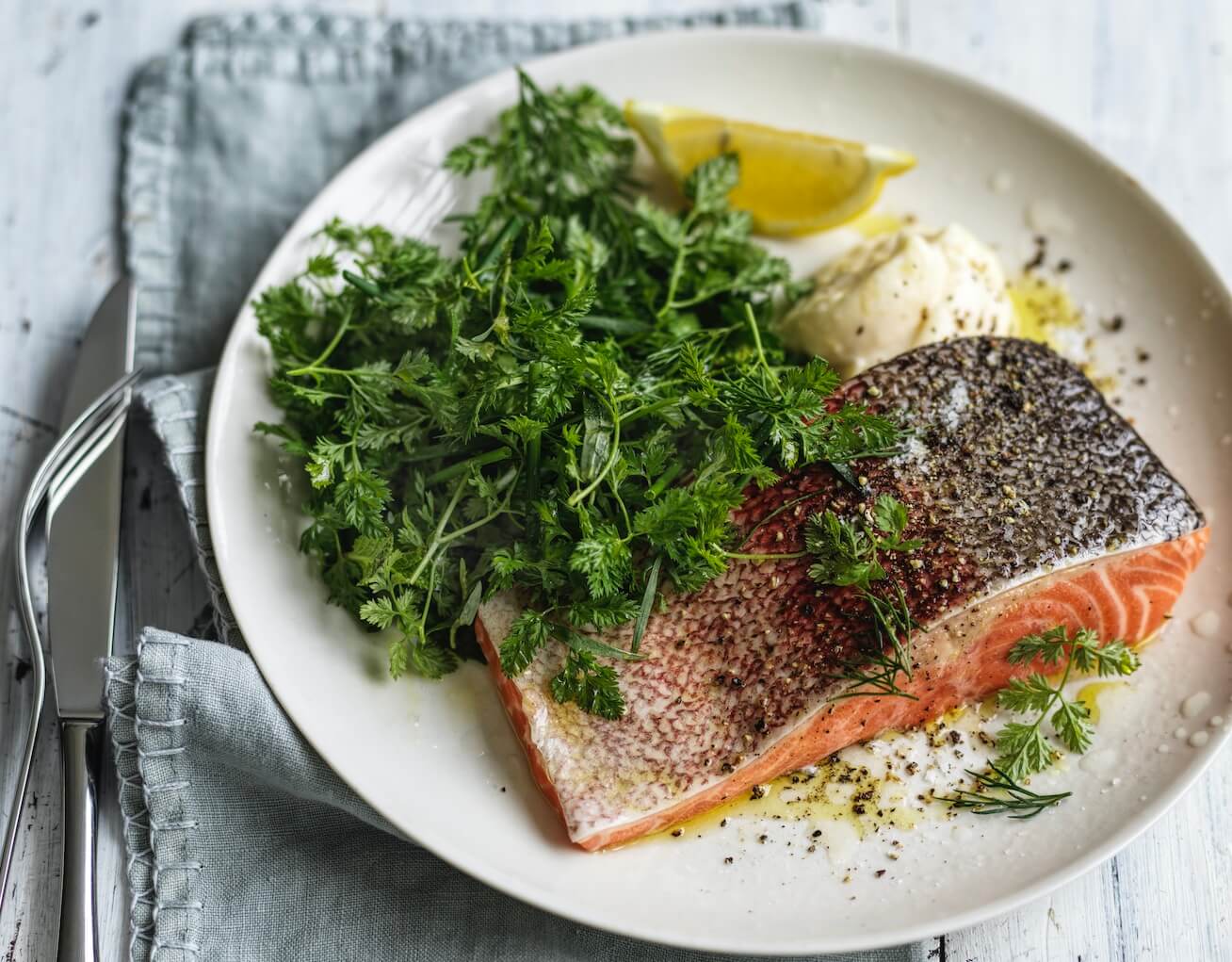
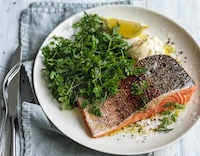
Sometimes the simple things in life are best. This is so true when it comes to a dish like this: the trout is the star and with a little support from the herbs you create a nice play of flavours for the tastebuds. The aim of poaching in olive oil is to cook the trout so gently that the flesh practically melts when a fork is pressed into it. Add a simple salad and a little lemon on the side and, voila, you have the perfect breakfast, lunch or dinner.
Recipe courtesy of Pete Evans. For more nourishing recipes and wellness insights, you can explore peteevans.com.
Keep this area empty if no references present.
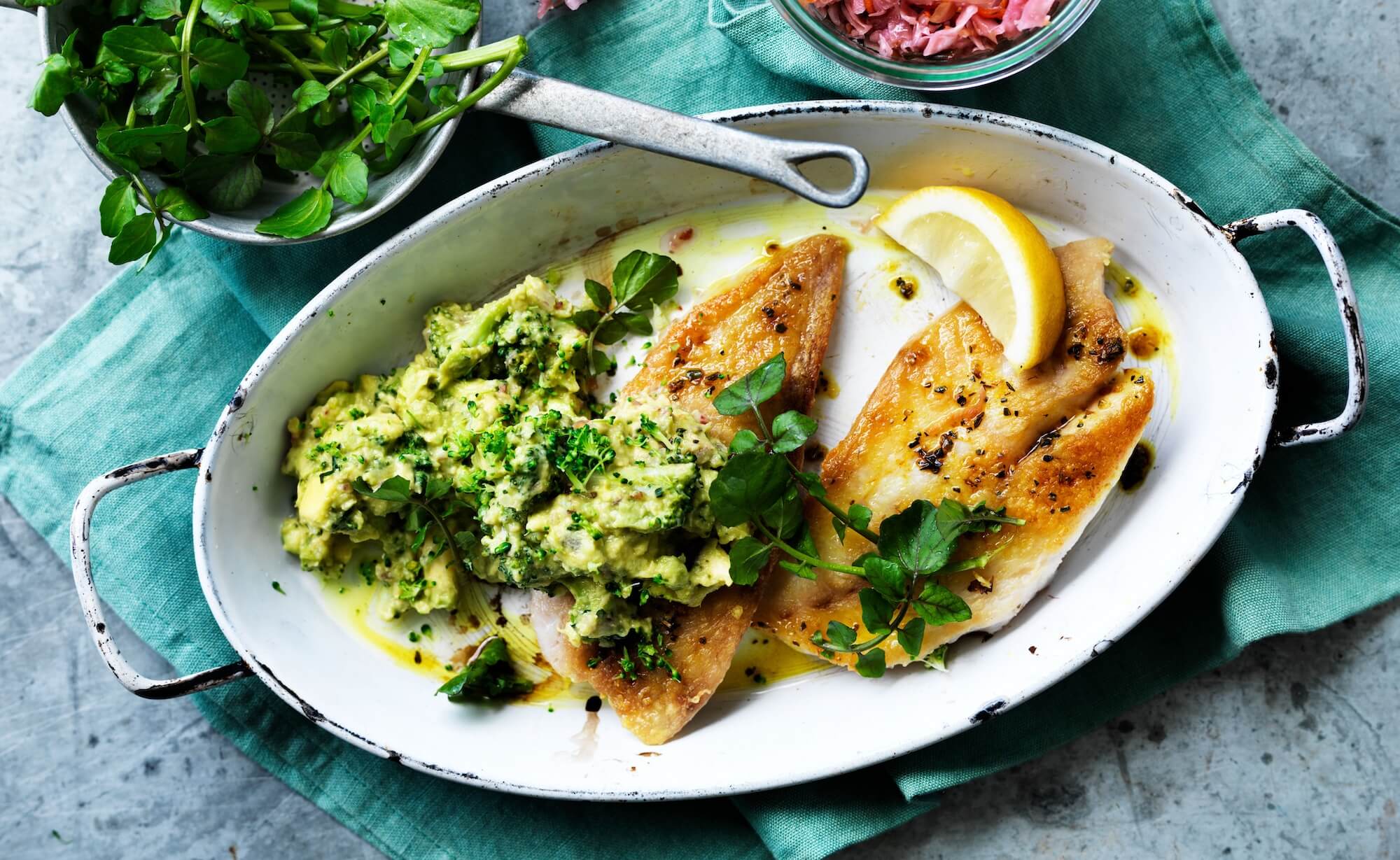
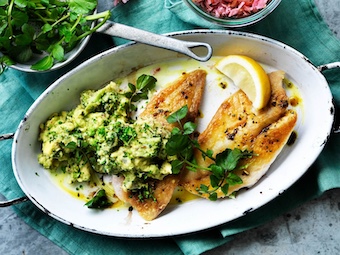
Holy broccomole! Broccomole is basically guacamole with some raw or cooked broccoli folded through it, which makes for an awesome accompaniment to so many things . . . eggs – poached, fried or boiled – grilled, steamed, poached or roasted meats and seafood, seed crackers, raw fish wrapped in nori, paleo nachos . . . the list goes on. Here, I demonstrate how to get a dish on the table from start to finish in under 10 minutes. Mind you, I get the girls to make the broccomole for me, so all I have to do is cook the fish and add some kraut.
Recipe courtesy of Pete Evans. For more nourishing recipes and wellness insights, you can explore peteevans.com.
Keep this area empty if no references present.
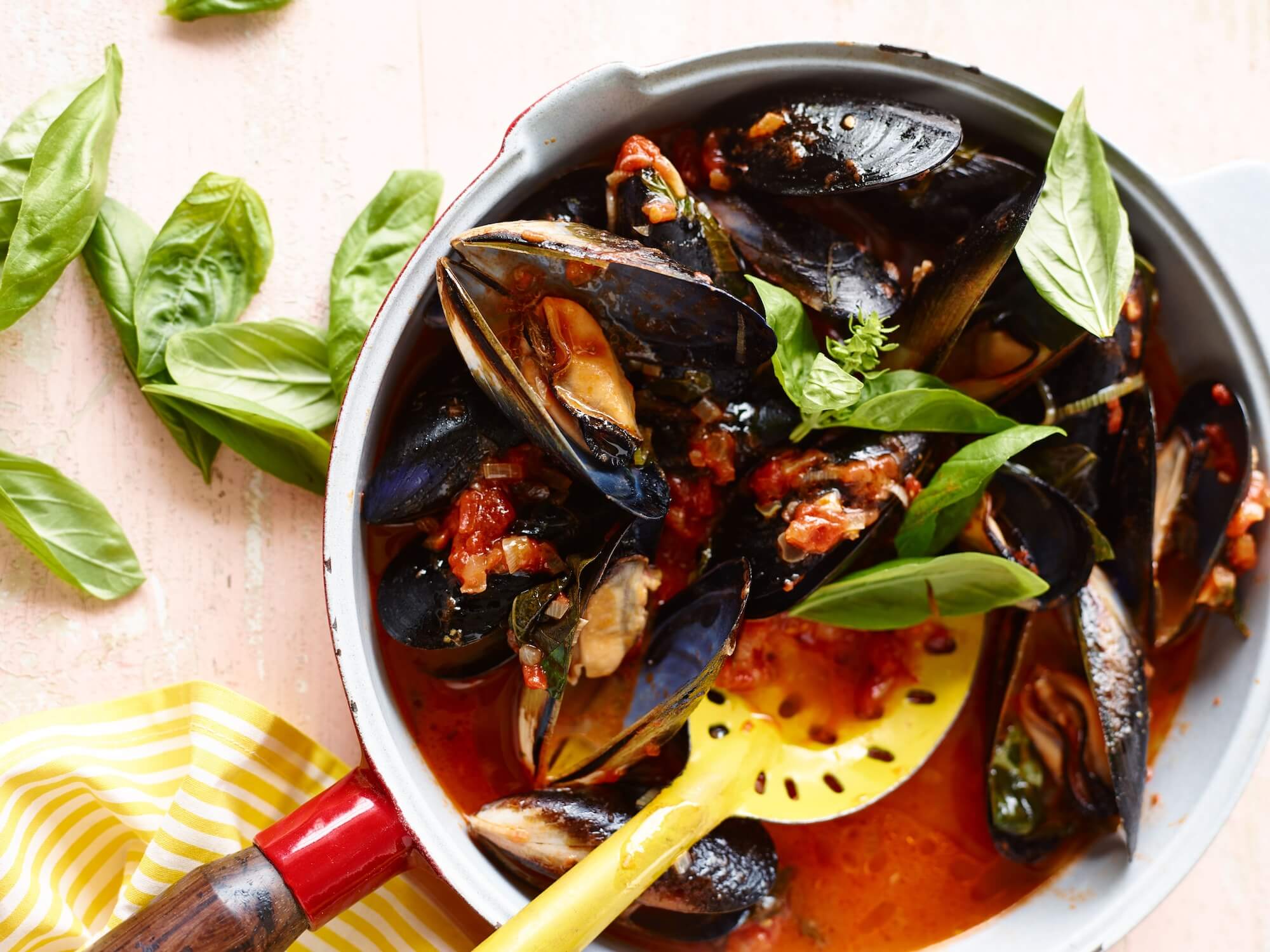
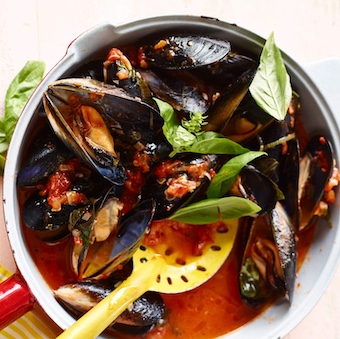
I can’t think of a greater joy as a parent than when your kids start developing an appreciation for nature’s superfoods. I never push my kids too hard to try things; instead we have an arrangement where if we are eating something new, they try a spoonful. If they don’t like it, they don’t have to eat it. However, they will be encouraged to try it again the next time we are eating it – which might be in a week’s or 6 months’ time. We do this because their palates are constantly changing and the more you experiment the more they will come to appreciate new flavours, aromas and textures. My heart skipped a beat recently when my eldest daughter, Chilli, tried a mussel for the twentieth time and said, "Yum, Dad. Can I have another one?"
Recipe courtesy of Pete Evans. For more nourishing recipes and wellness insights, you can explore peteevans.com.
Keep this area empty if no references present.
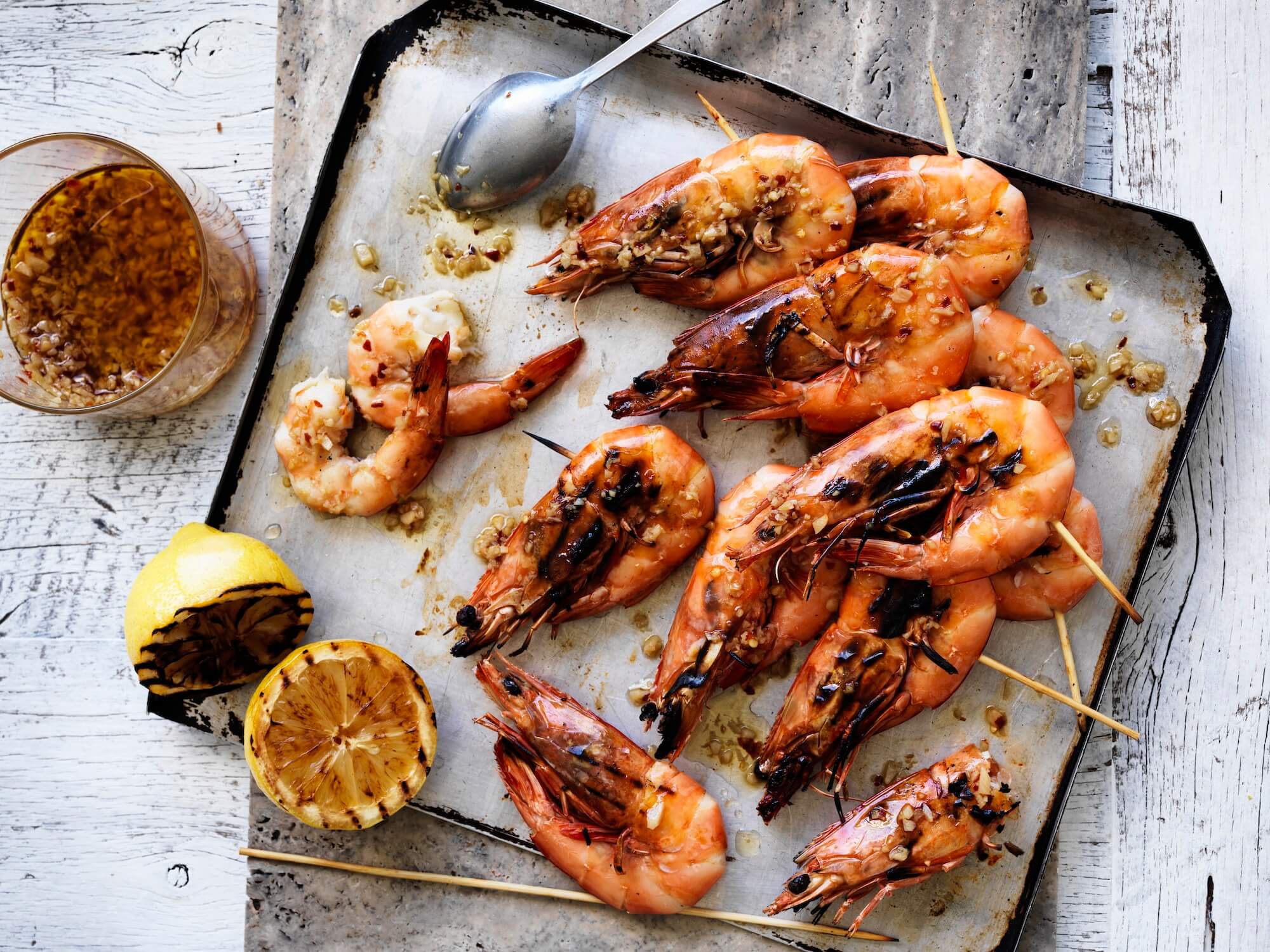
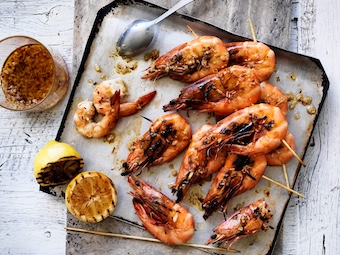
I am a huge fan of eating food with my hands and it doesn’t get much better than prawns in their shells. I simply barbecue or chargrill the shrimp so the shells are lovely and charred and the flesh is nice and juicy. A squeeze of lemon and a sprinkle of salt is all that is needed for a perfect weekend barbecue. If you want to get a little fancy, add a delicious garlic dressing like the one here.
Recipe courtesy of Pete Evans. For more nourishing recipes and wellness insights, you can explore peteevans.com.


School and work lunches do not have to be difficult, but they should be delicious. Here, we have taken the classic tuna and egg salad and served it in some cos lettuce. To avoid soggy lettuce, pack the salad and cos leaves in separate lunch boxes — you might like to pack a spoon or fork, too — and then assemble your salad cups at lunchtime.
Recipe courtesy of Pete Evans. For more nourishing recipes and wellness insights, you can explore peteevans.com.
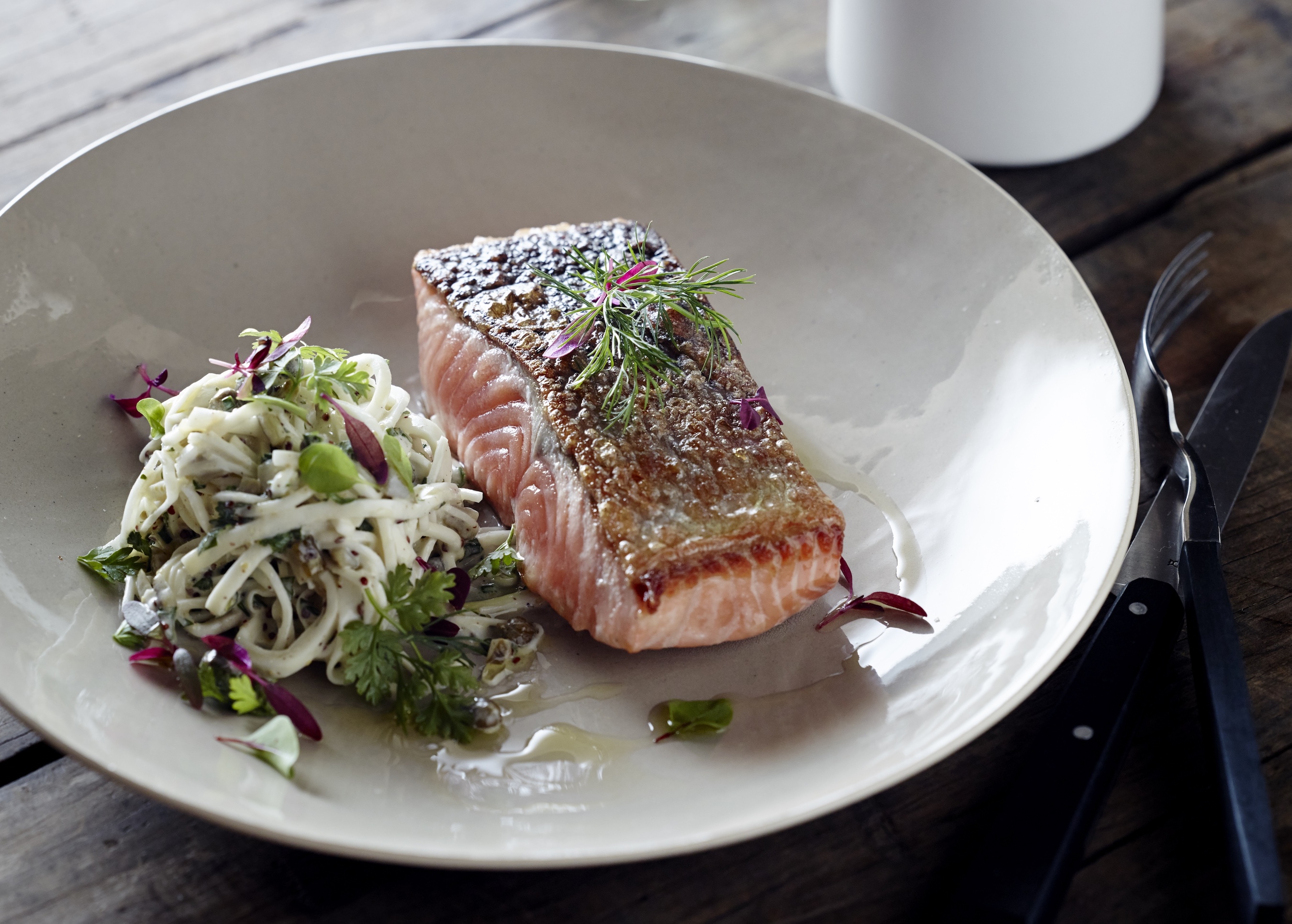
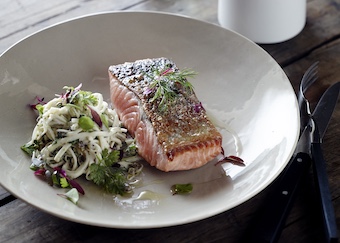
Fish and salad is wonderfully healthy, but to many people doesn’t seem like a meal that will leave you feeling satisfied. That is why I wanted to include this dish, as it is full of good fats – from the fish and the mayonnaise in the celeriac – which truly satiate. Celeriac is a wonderful vegetable to eat raw and is full of prebiotics. Serve with fermented veg or fold some through the remoulade with the celeriac. I guarantee this will become a new favourite recipe.
*Dietary Notes:
Recipe courtesy of Pete Evans. For more nourishing recipes and wellness insights, you can explore peteevans.com.
Keep this area empty if no references present.
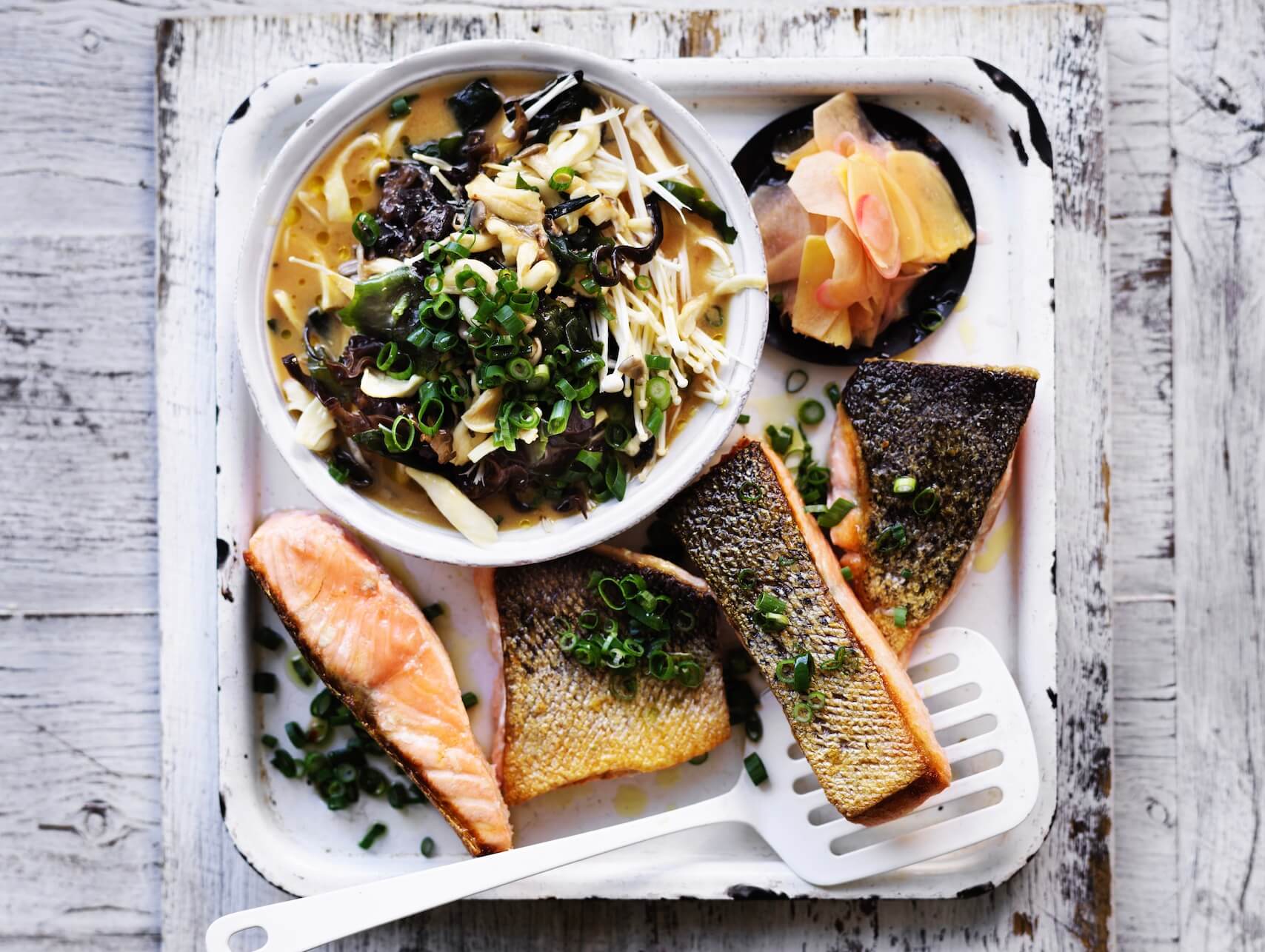
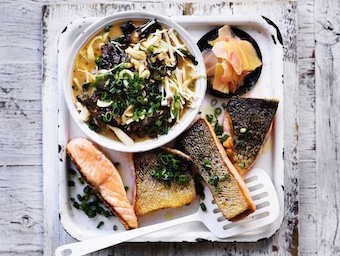
The combination of mushrooms and fish may seem a little strange, but I encourage you to give it a try. It is both delicious and health-boosting, with high levels of omega-3s and antioxidants. My favourite varieties of fish to serve with mushrooms are the fattier and oilier types, such as salmon, trout, sardines and mackerel.
*Dietary Note: Paleo if miso paste is compliant with the specific paleo guidelines.
Recipe courtesy of Pete Evans. For more nourishing recipes and wellness insights, you can explore peteevans.com.
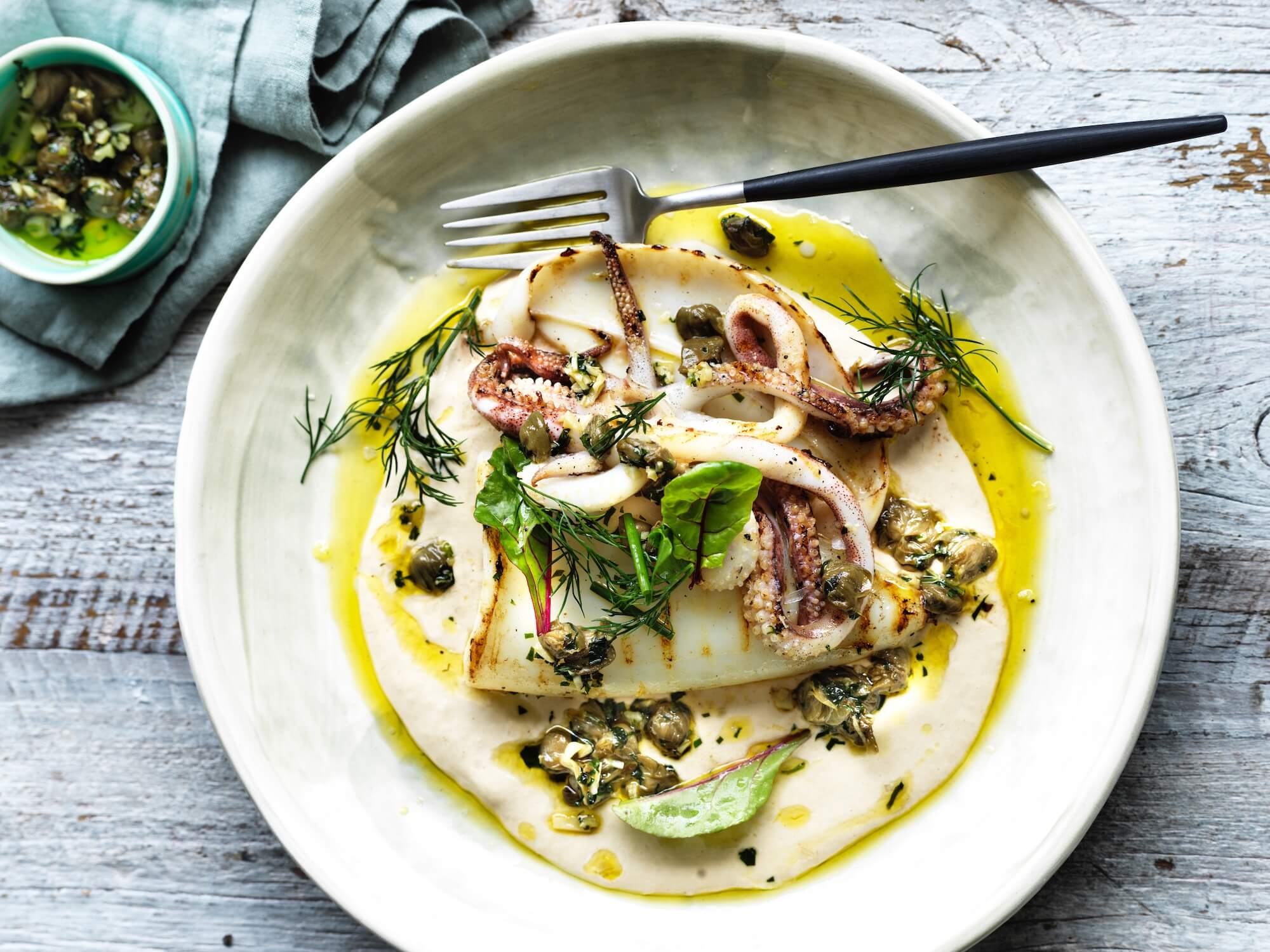
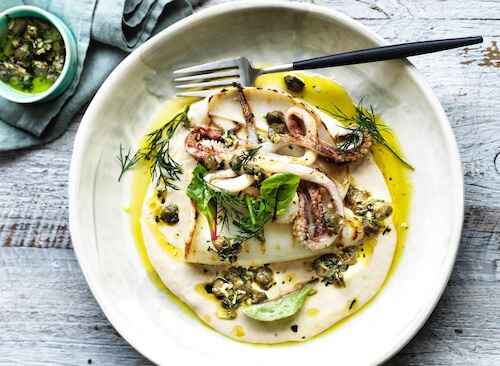
This is my spin on the classic Italian dish vitello tonnato – thinly sliced slow-cooked veal served with tuna mayonnaise. Here, I have replaced the veal with squid. Serve alongside some grilled broccolini or a simple salad. If squid isn’t your thing, then pretty much any kind of grilled fish will work well, too.
Recipe courtesy of Pete Evans. For more nourishing recipes and wellness insights, you can explore peteevans.com.
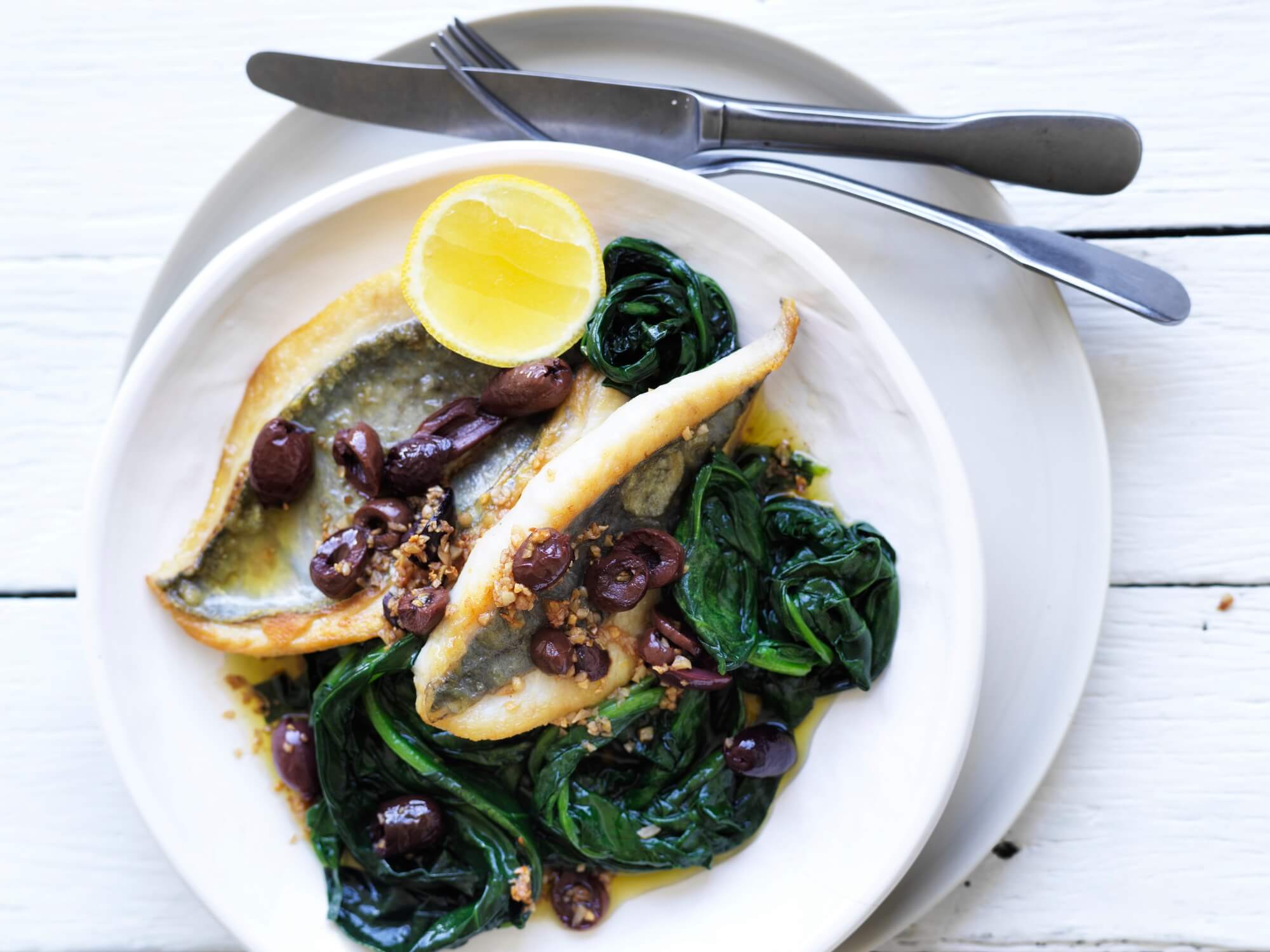
I don’t really need to say too much about this dish except … cook it!
Recipe courtesy of Pete Evans. For more nourishing recipes and wellness insights, you can explore peteevans.com.
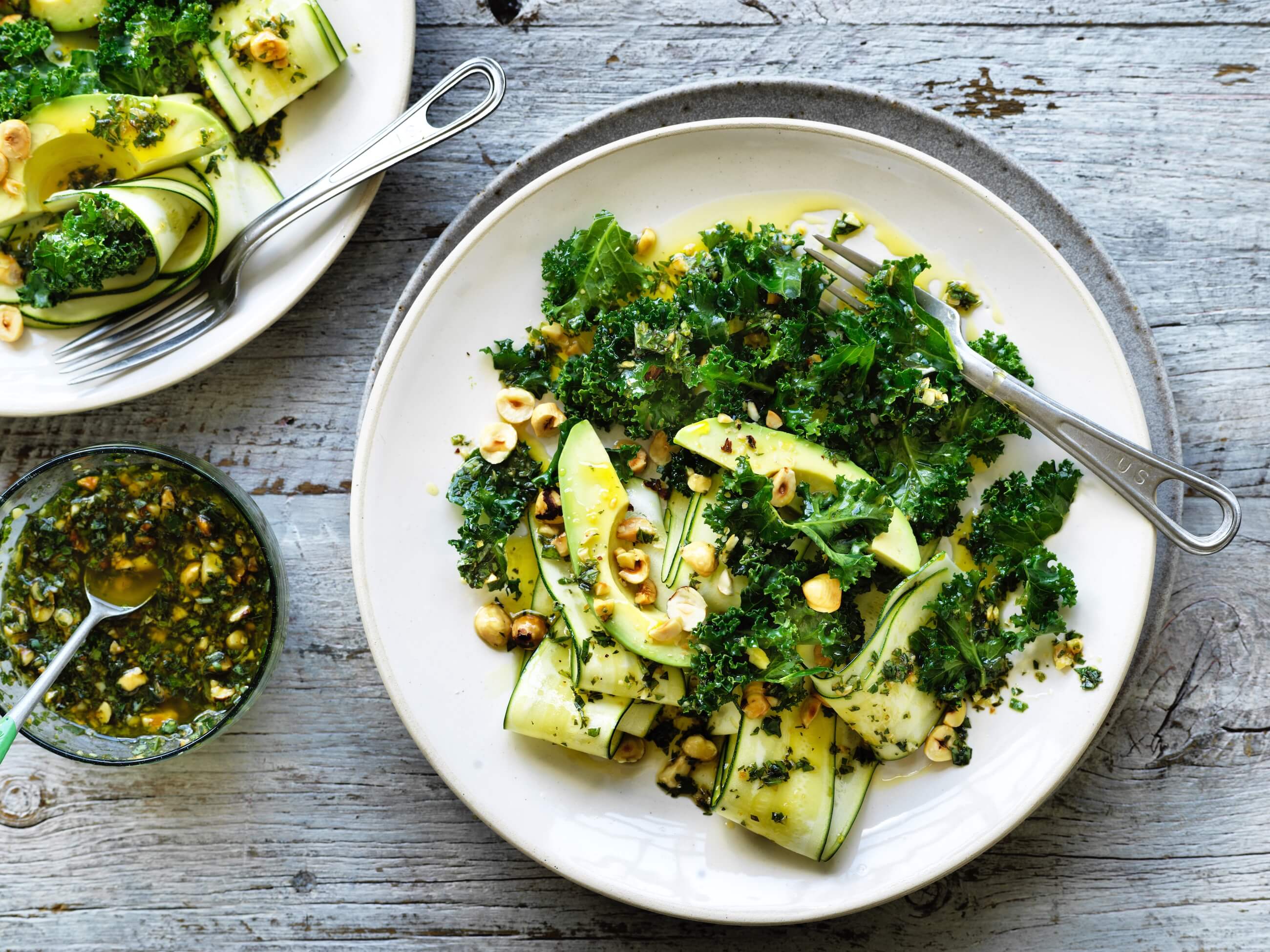
Kale and zucchini are a match made in salad heaven. To take this pairing to the next level, add some good fats in the form of avocado and this amazing hazelnut pesto (it’s so good you’ll want to make extra and give it to your neighbours). Toss through some flaked smoked trout or halved boiled eggs or serve alongside roast chook or pork belly for a more substantial meal.
*Dietary Notes:
Recipe courtesy of Pete Evans. For more nourishing recipes and wellness insights, you can explore peteevans.com.
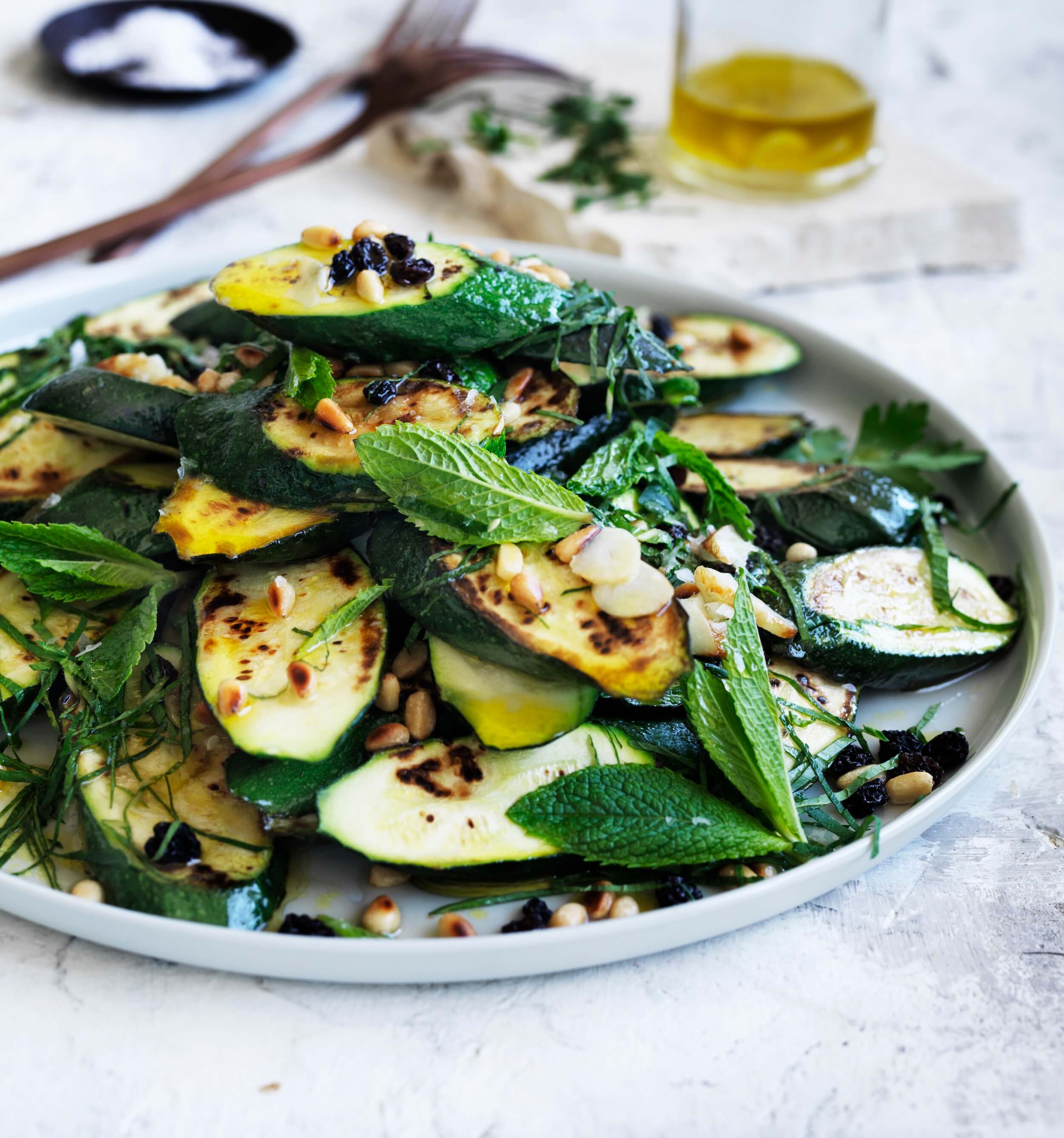
Here is another wonderful salad you can put together in a matter of minutes when zucchini is at its peak in summer. If you’d like to turn this into a meal, add some raw tuna, cooked prawns or roast chicken.
*Dietary Notes:
Recipe courtesy of Pete Evans. For more nourishing recipes and wellness insights, you can explore peteevans.com.
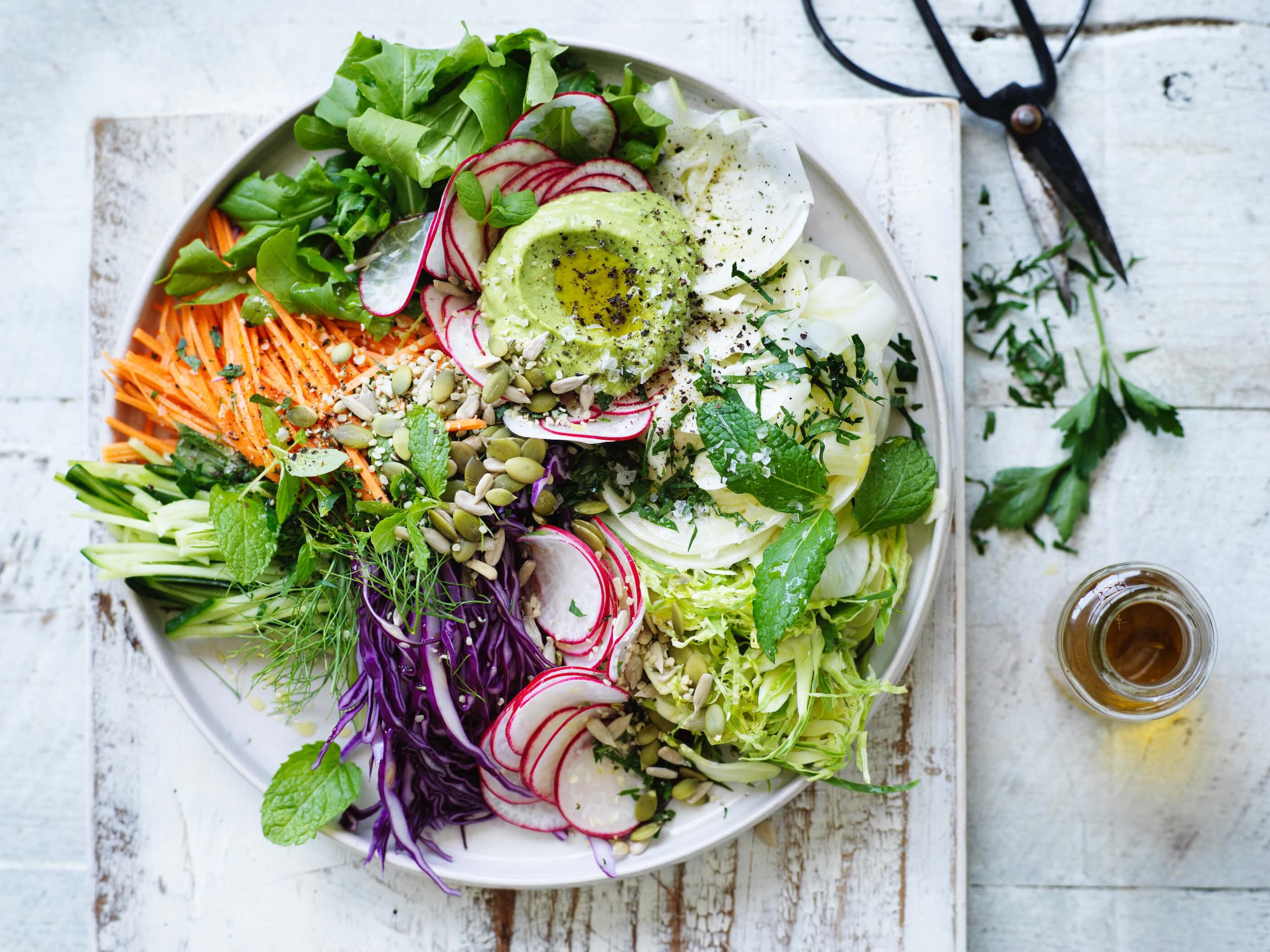
There really is nothing more satisfying on a hot day than tucking into a delicious raw salad. Always have the freshest vegetables on hand to slice, shave, grate, spiralise, chop or dice; and use organic, where possible. These are some of my favourite ingredients to go into a raw salad. I have used a tahini dressing but feel free to dress your salad with mayo or a vinaigrette if you prefer. Some cooked prawns or chicken would work beautifully with this, too.
*Dietary Note: Keto if carrot and tahini are moderated for strict adherence.
Recipe courtesy of Pete Evans. For more nourishing recipes and wellness insights, you can explore peteevans.com.
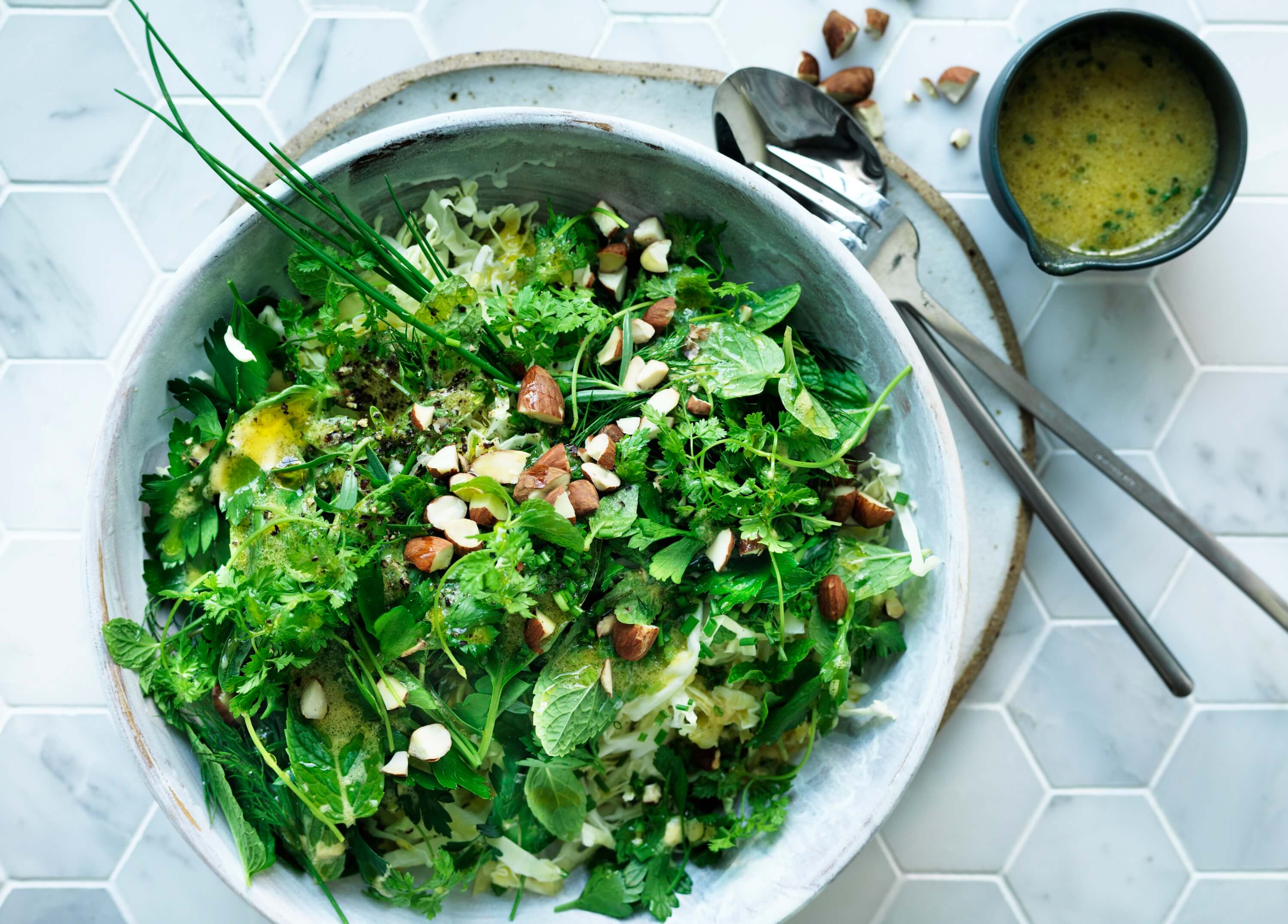
This beautiful and nutritious salad is simply the best. Using a combination of fresh herbs and adding a very simple dressing to gently coat each leaf makes every mouthful utterly delicious. You can, of course, add watercress, lettuce or spinach leaves to bulk out your salad, and nuts and seeds are optional.
*Dietary Notes:
Recipe courtesy of Pete Evans. For more nourishing recipes and wellness insights, you can explore peteevans.com.
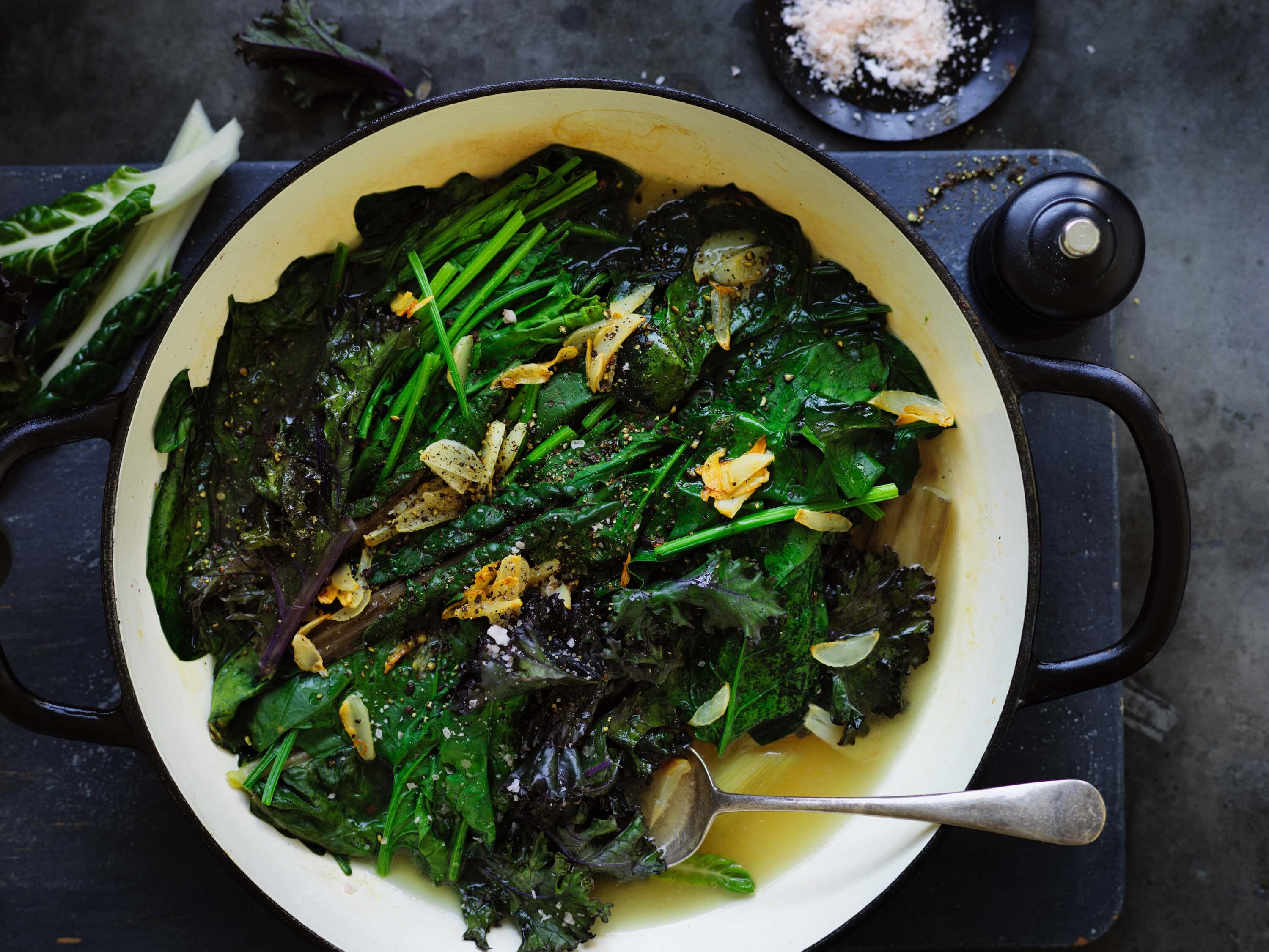
We have a wonderful veggie garden at our farm and always have greens growing, so every mealtime we go out and harvest some for the table. This is a recipe we often use. It is so easy and yummy and almost any green veggie you can think of will be perfectly at home with the bone broth and garlicky dressing.
Recipe courtesy of Pete Evans. For more nourishing recipes and wellness insights, you can explore peteevans.com.
| Calorie | 50mg |
| Fat | 1000mg |
| Protein | 0mg |
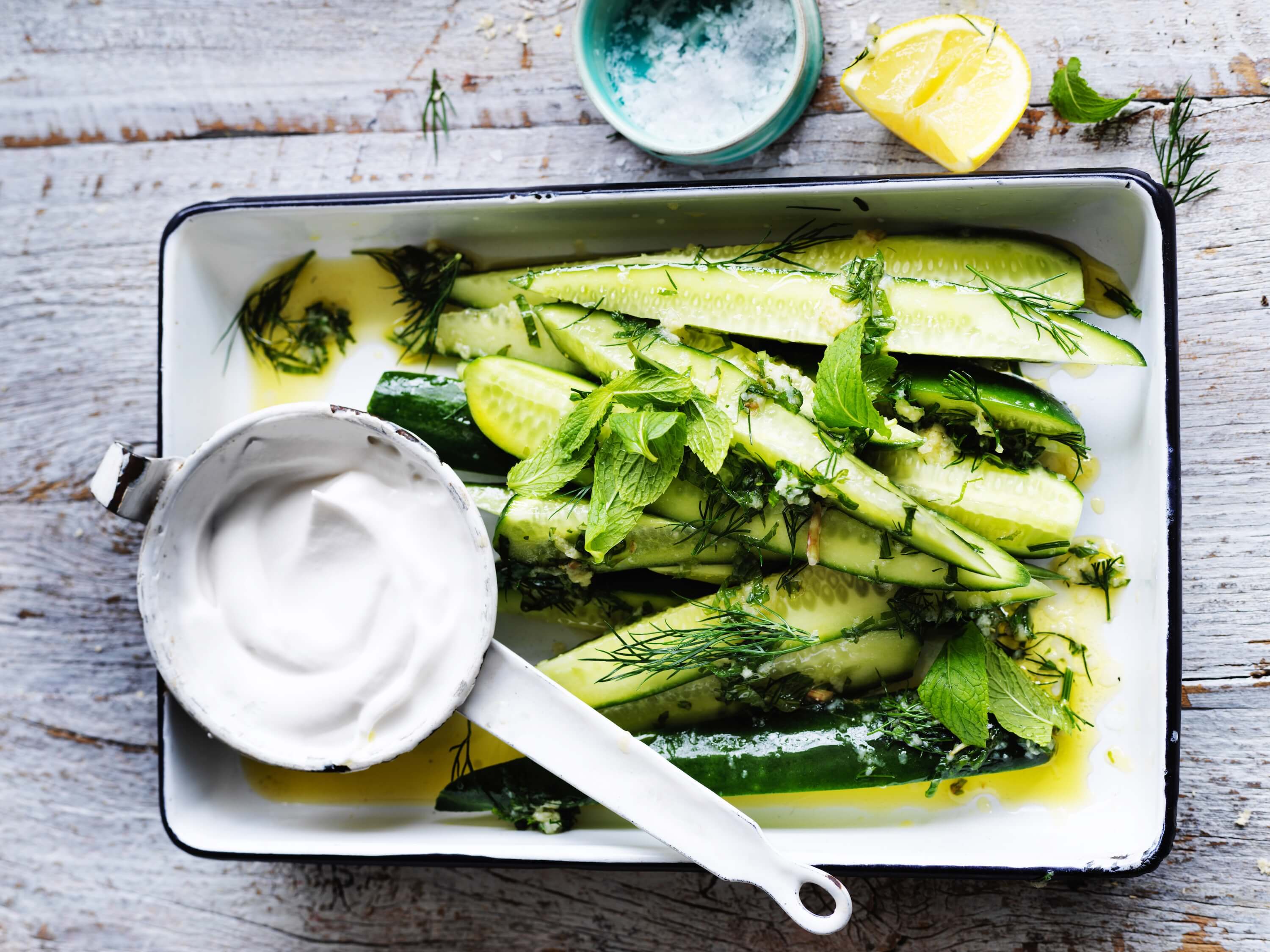
I love reinterpreting classic dishes in a modern way. To make the most of summer’s abundance of cucumbers, I am always searching for ways to use them up. In this spin on Greek tzatziki, cucumber is given the chance to shine. Some grilled prawns or barbecued wild-caught salmon or roast lamb would be great to accompany it.
Recipe courtesy of Pete Evans. For more nourishing recipes and wellness insights, you can explore peteevans.com.
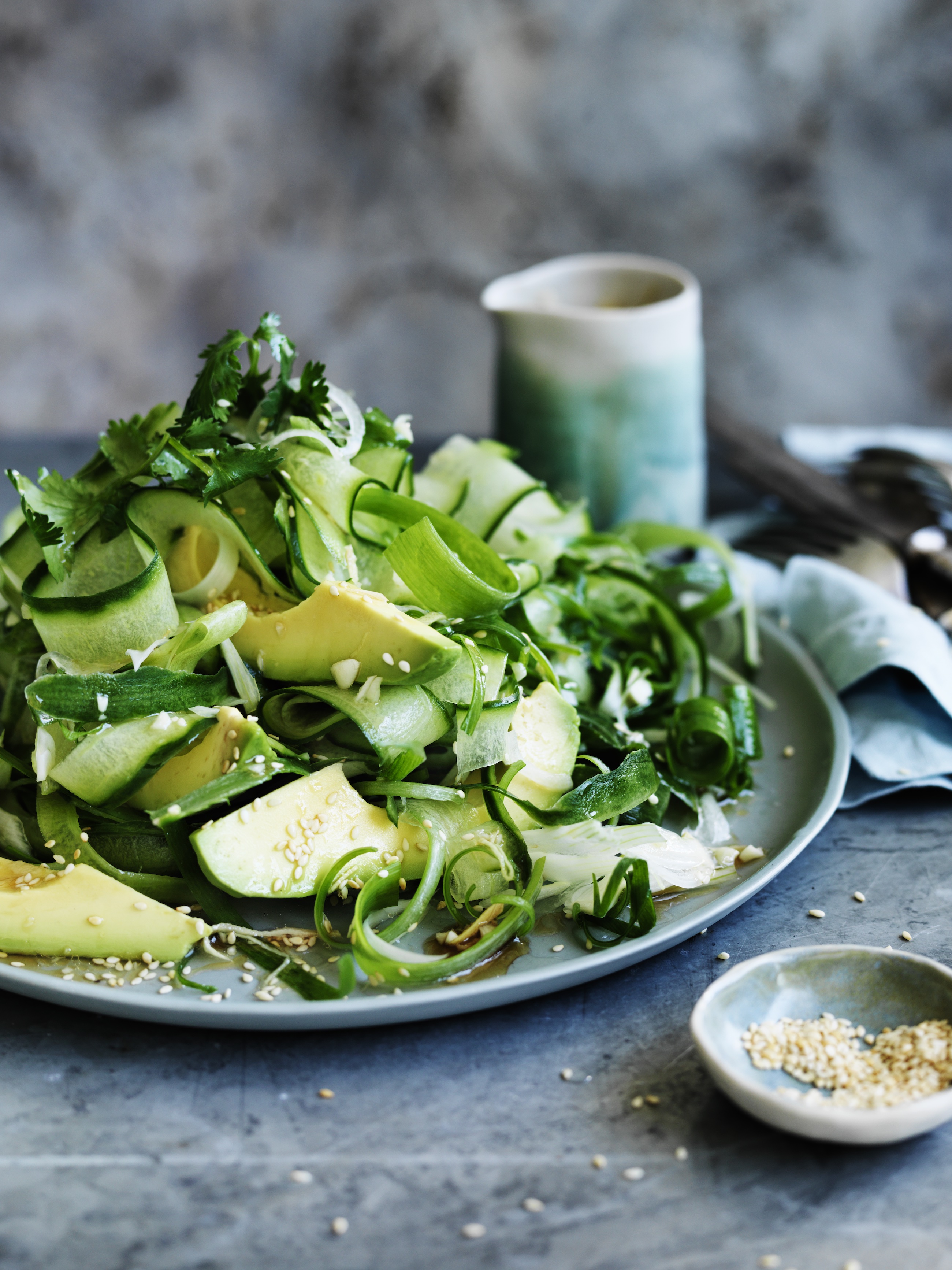
*Dietary Note: Omit or substitute honey for keto, paleo, and vegan.
Recipe courtesy of Pete Evans. For more nourishing recipes and wellness insights, you can explore peteevans.com.
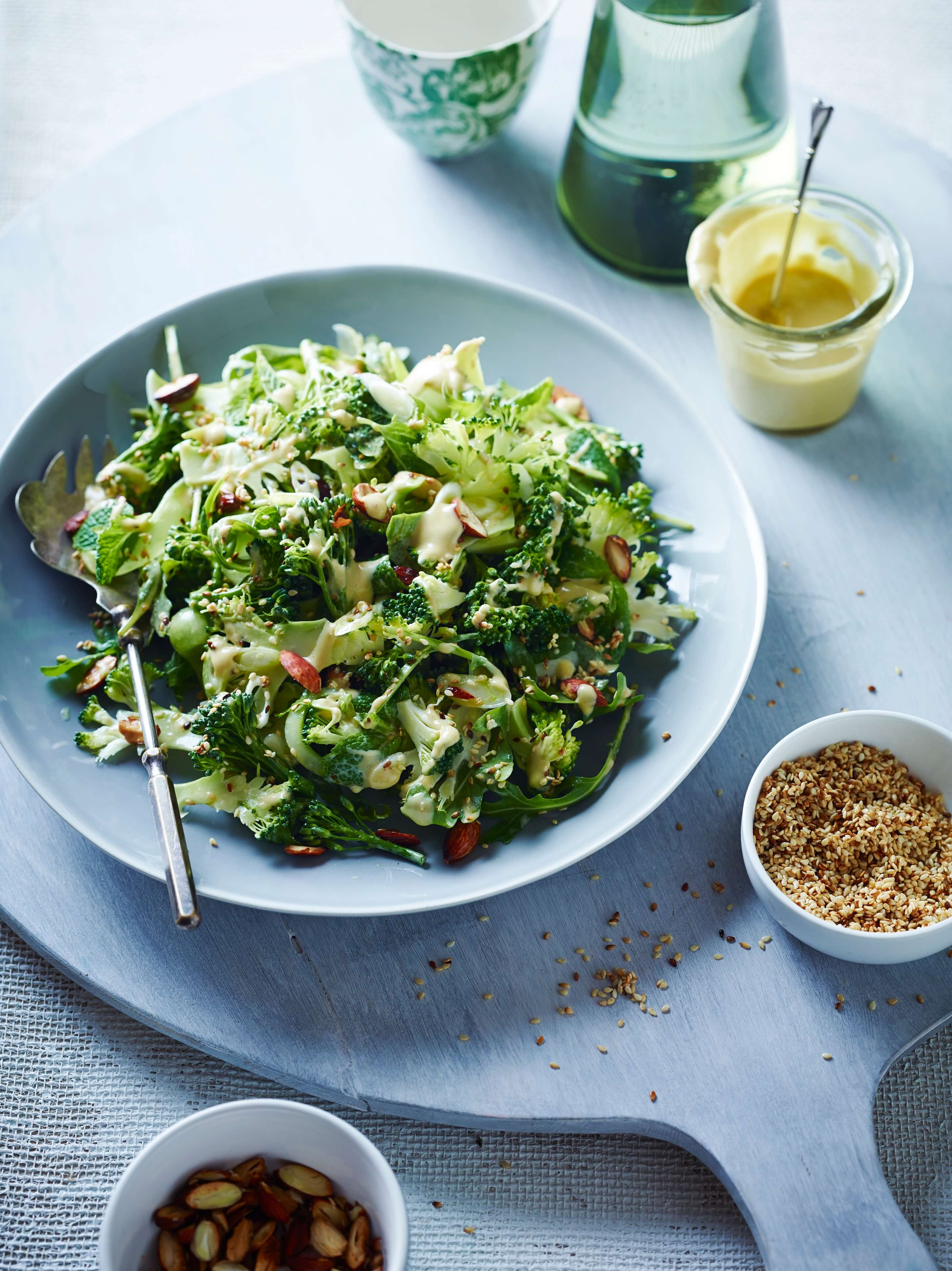
Here is an utterly delicious dish that deserves to be eaten at any time of the year. It will leave you wanting to have it again and again and again. When we make this at home we simply add in some protein in the form of leftover roast chicken, pork or lamb, or sometimes we add prawns, crabmeat or flaked fish. Serve with some fermented veg tossed through the salad.
*Dietary Notes:
Recipe courtesy of Pete Evans. For more nourishing recipes and wellness insights, you can explore peteevans.com.
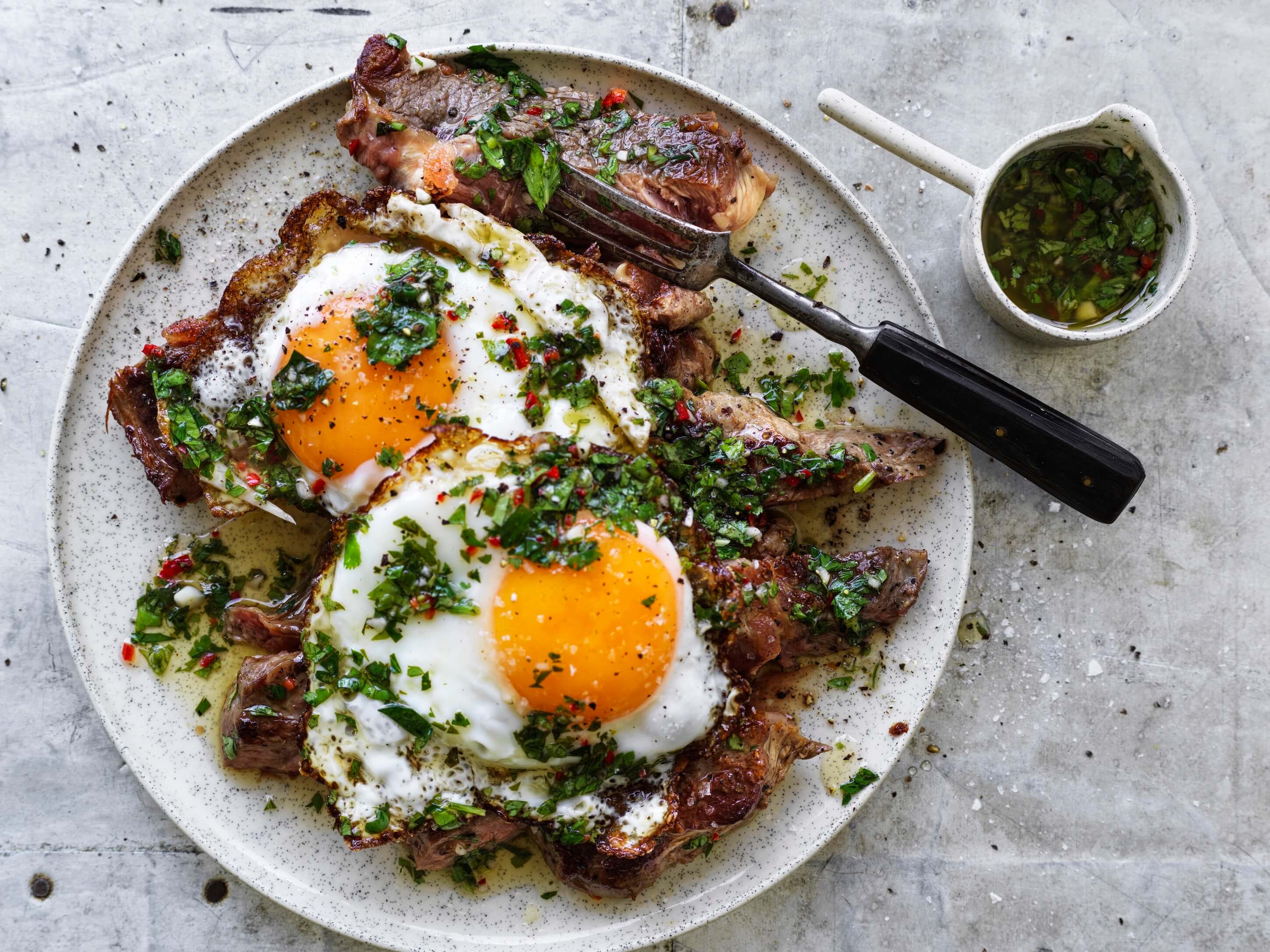
Savor the succulent flavors of perfectly cooked steak and eggs, complemented by a zesty chimichurri sauce for a burst of freshness and spice.
Recipe courtesy of Pete Evans. For more nourishing recipes and wellness insights, you can explore peteevans.com.
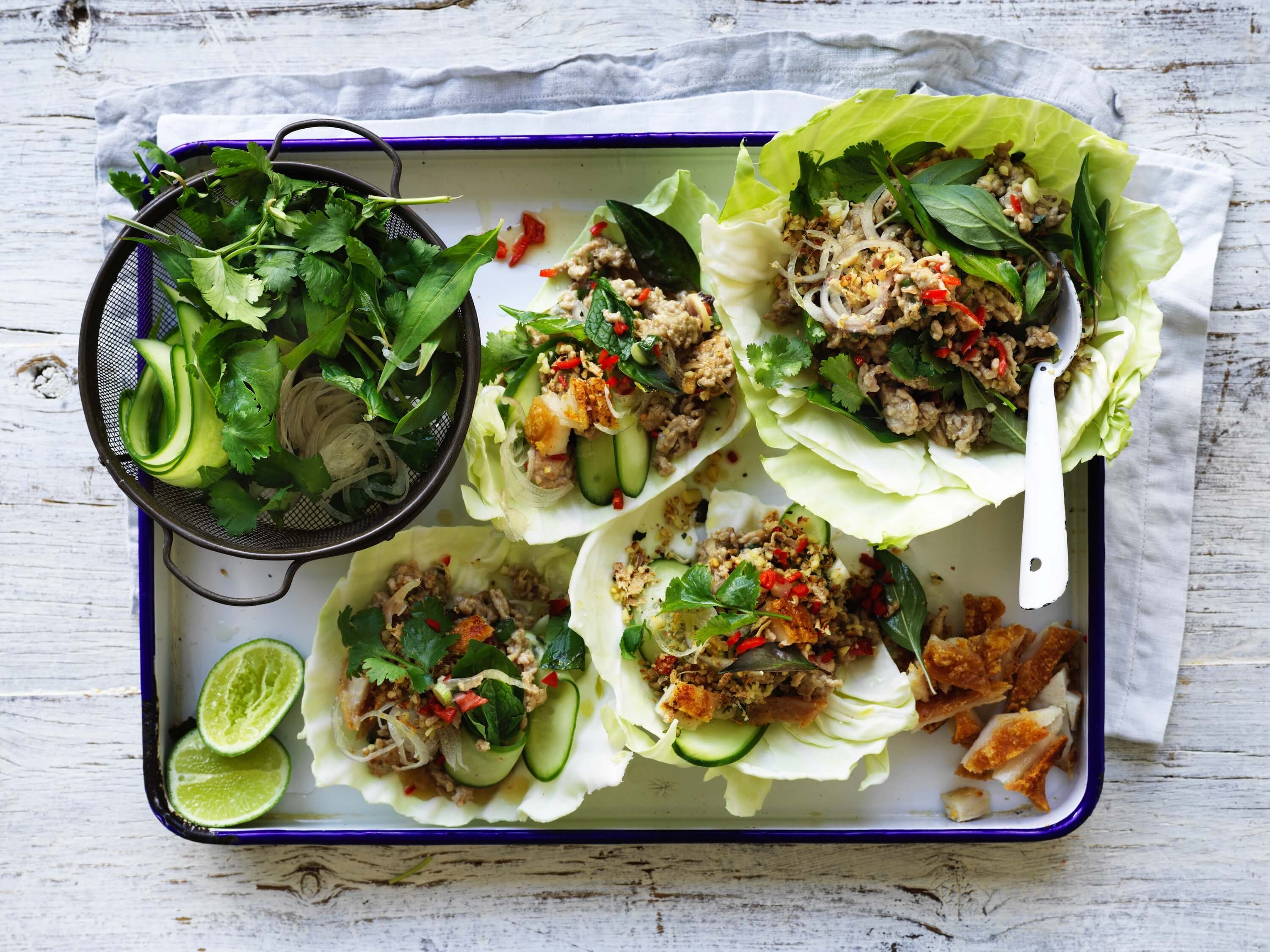
I have shared many larb recipes over the years and I will keep sharing them as larb is one of my go-to dishes when I need flavour but don’t have a lot of time to spare. You can have this on the table in 15 minutes, and you can pretty well use any mince that takes your fancy, although pork mince – so fatty and full of flavour – is my favourite.
Recipe courtesy of Pete Evans. For more nourishing recipes and wellness insights, you can explore peteevans.com.
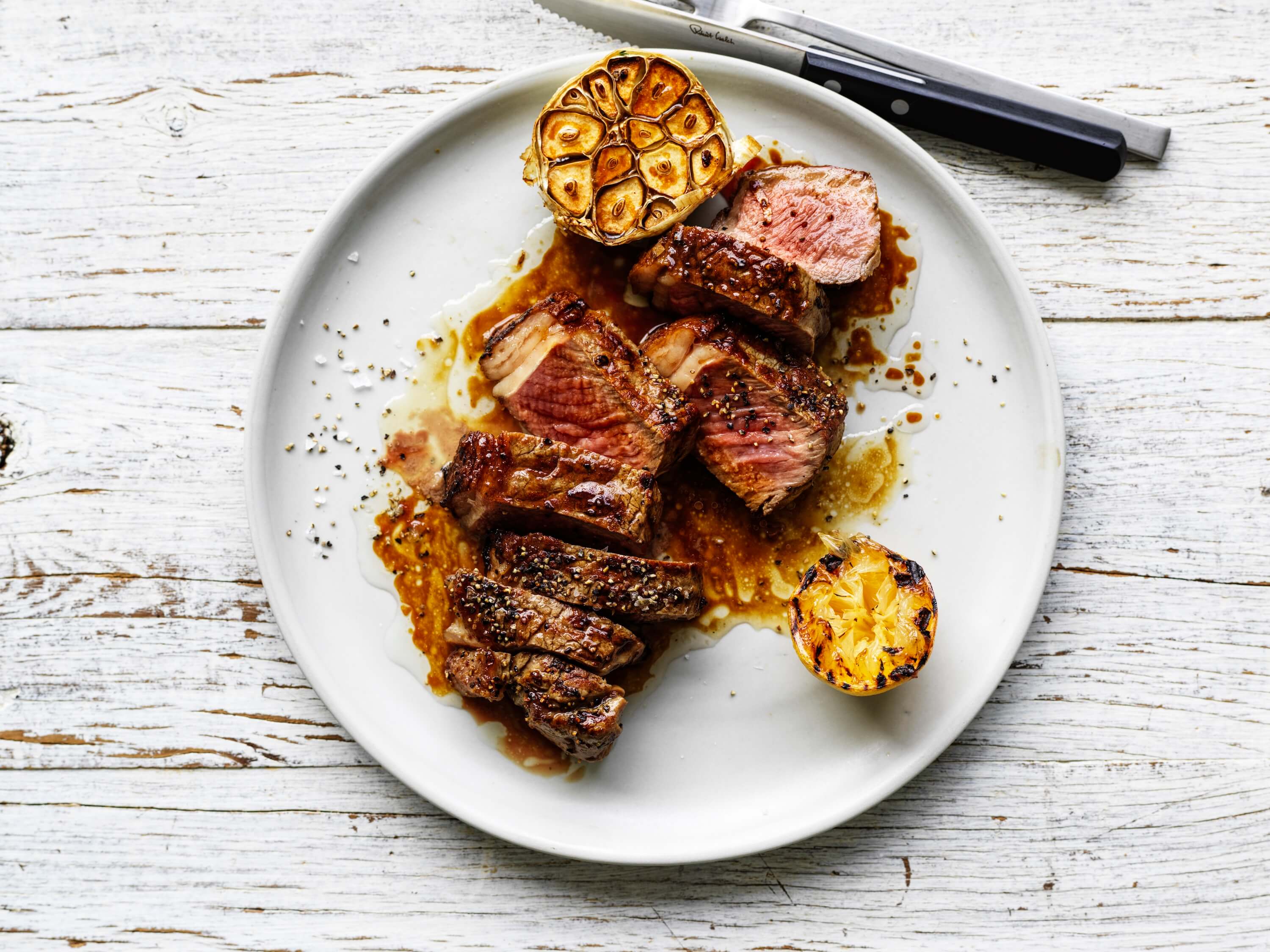
Some days I just love a good steak to break my fast, and it doesn’t need to be fancy. I remember being served a simply grilled steak with good-quality salt, olive oil and a lemon cheek in an Italian restaurant 30 years ago. An apprentice chef at the time, I was a little annoyed as I thought not much effort had gone into the meal. Where were all the bells and whistles? Well, from the first bite to the last, it was utterly delicious; the perfect balance of fat, protein, salt and acid. That one dish taught me so much about cooking and has helped shape me into the chef I am today.
Recipe courtesy of Pete Evans. For more nourishing recipes and wellness insights, you can explore peteevans.com.
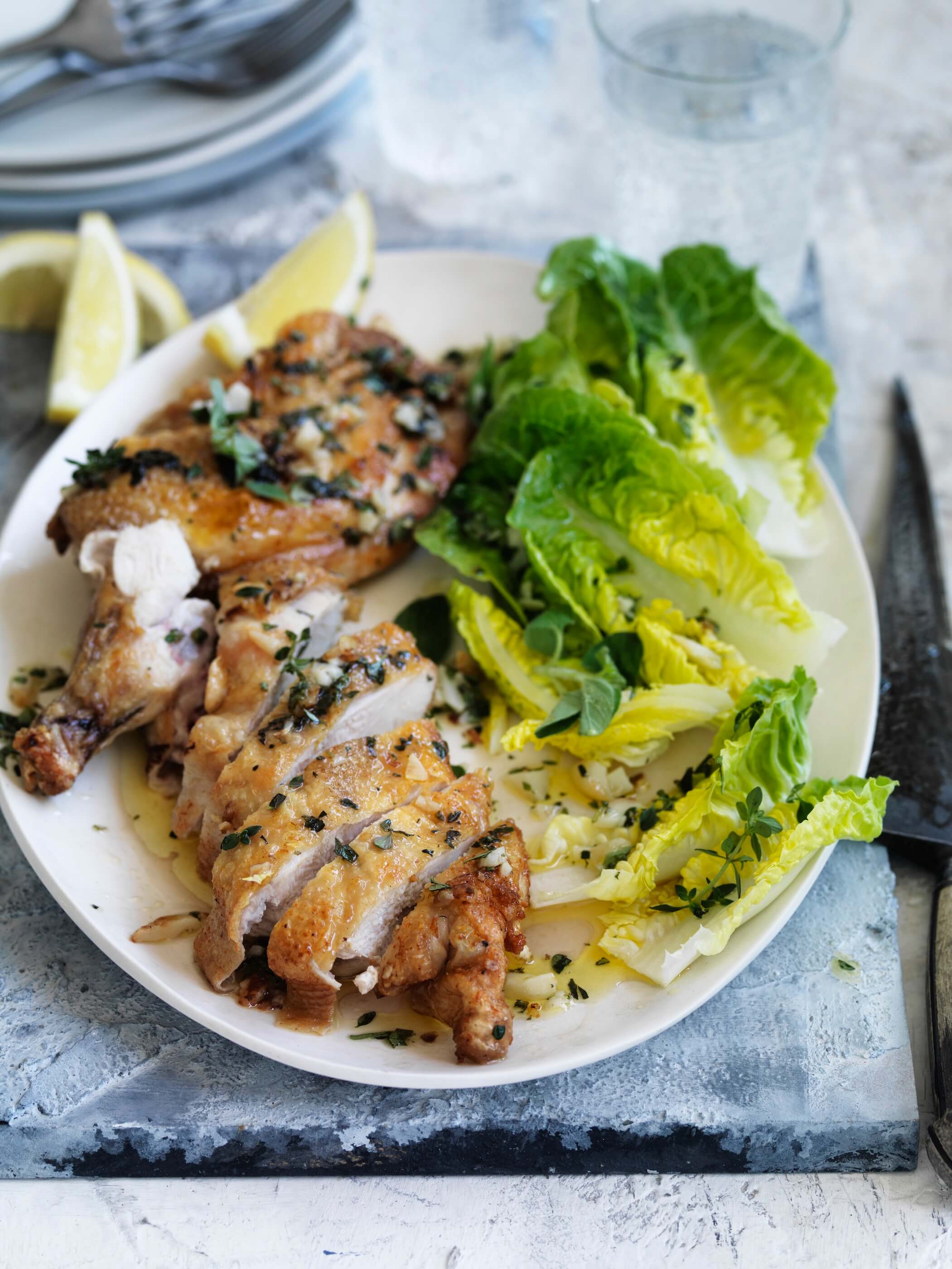
This simple recipe showcases lemon and chicken. A treat to prepare and eat, the juices from the lemon and chicken mix to create the most delicious sauce. I advise cooking extra as the chicken is perfect for salads, snacks and sandwich fillings. Of course, you can use chicken thighs with the skin on instead.
Recipe courtesy of Pete Evans. For more nourishing recipes and wellness insights, you can explore peteevans.com.
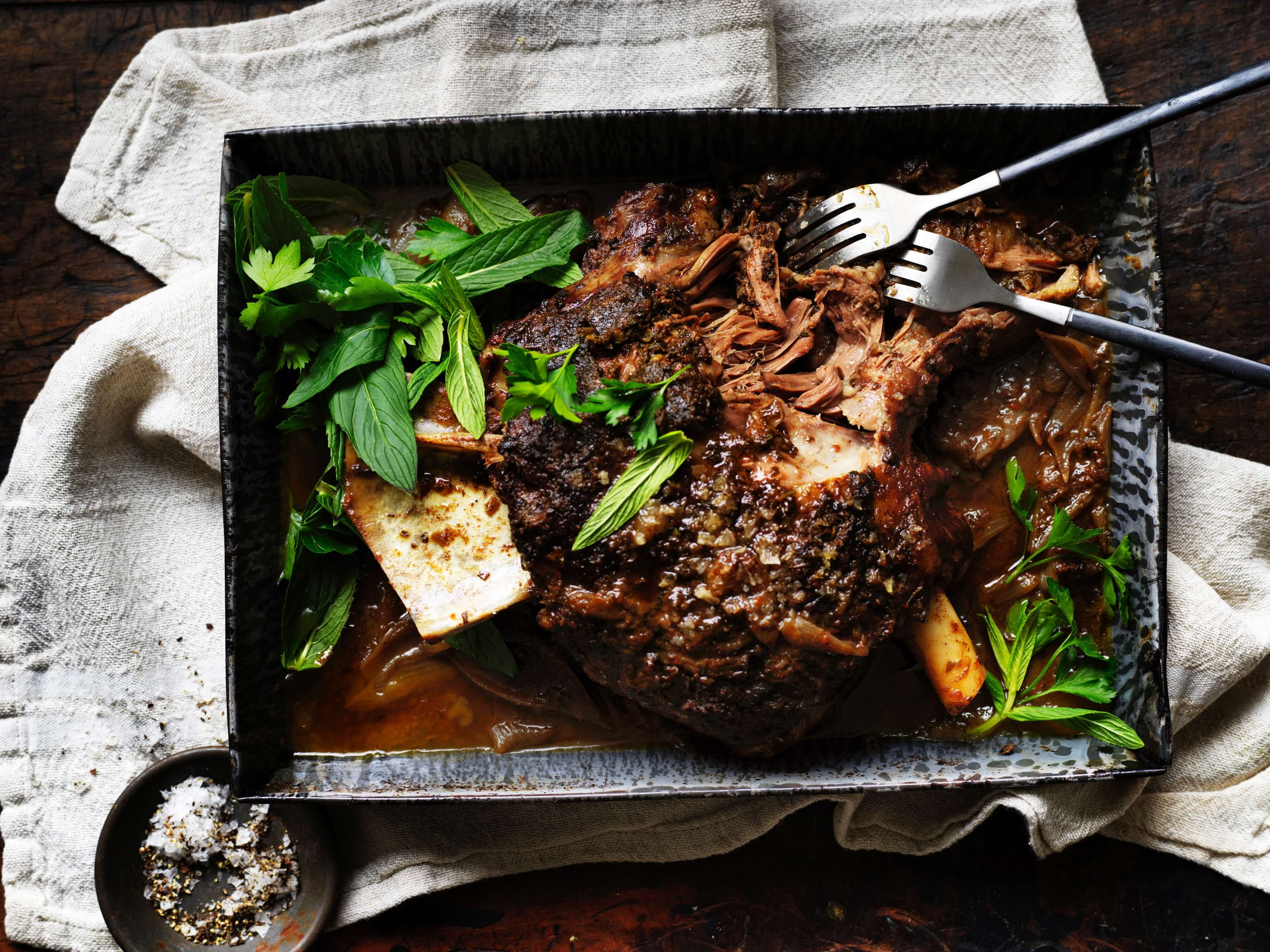
Searching for a delicious keto dish that keeps on giving? Look no further. Cooking a meal like this – which, by the way, is perfect for dinner parties – generally means you’ll have leftovers. To me, any leftovers are just as good, if not better, as when the lamb comes out of the oven. You could add eggs and greens for breakfast, toss with a salad for lunch or stir into a broth with vegetables for an unforgettable dinner.
Recipe courtesy of Pete Evans. For more nourishing recipes and wellness insights, you can explore peteevans.com.
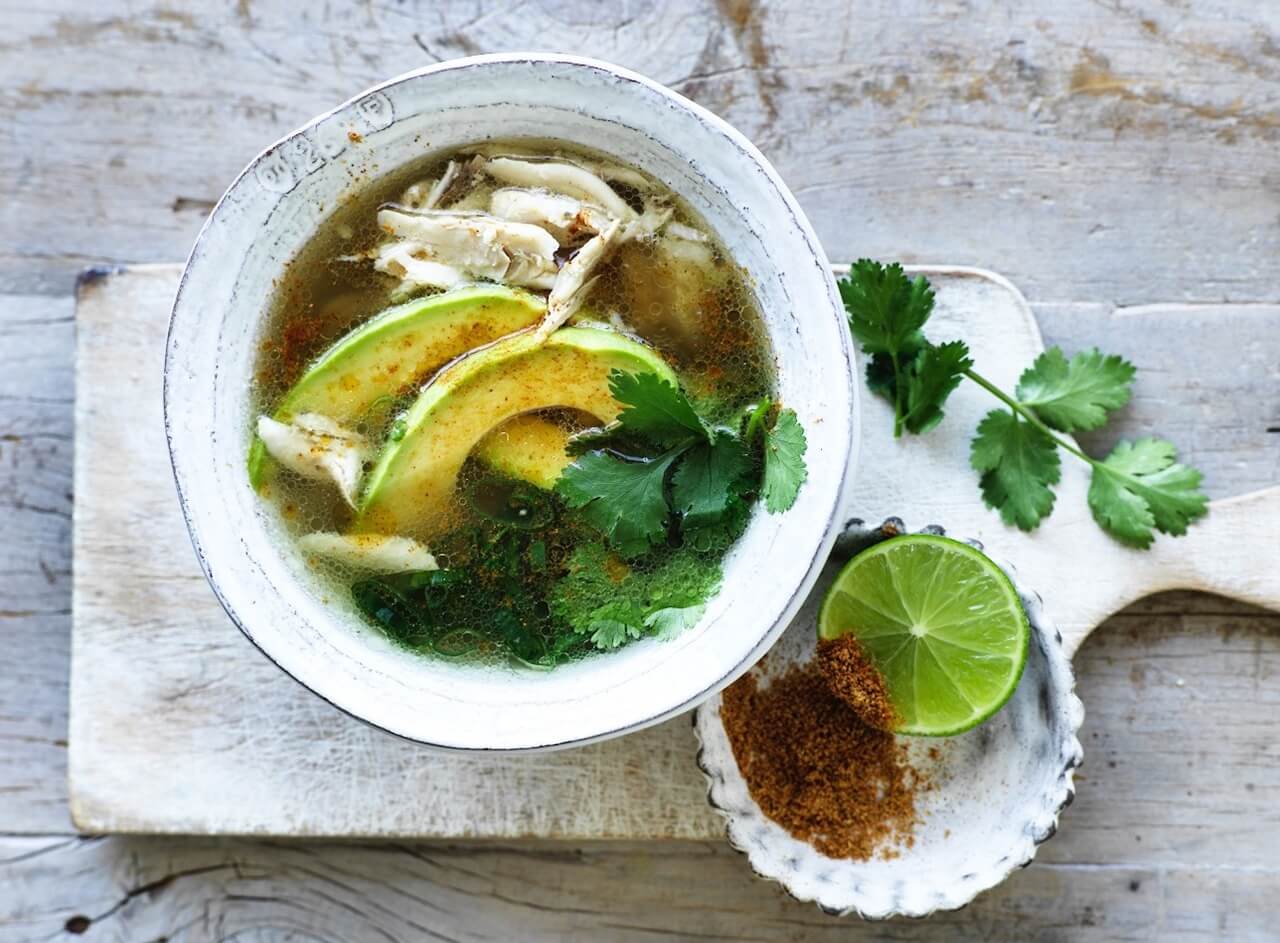

This may seem like a strange pairing, but you have to trust me and give it a try. I was fortunate enough to visit Mexico recently, where I tried this soup. It was a revelation. With each mouthful the nourishing, lightly spiced broth became more and more addictive, each slurp better than the last. To make this a larger meal, try adding a soft-boiled egg or, to thicken, whisk in a raw egg at the end of cooking. This is awesome not only for breakfast, but for a light lunch and dinner too.
Dietary Notes:
Recipe courtesy of Pete Evans. For more nourishing recipes and wellness insights, you can explore peteevans.com.
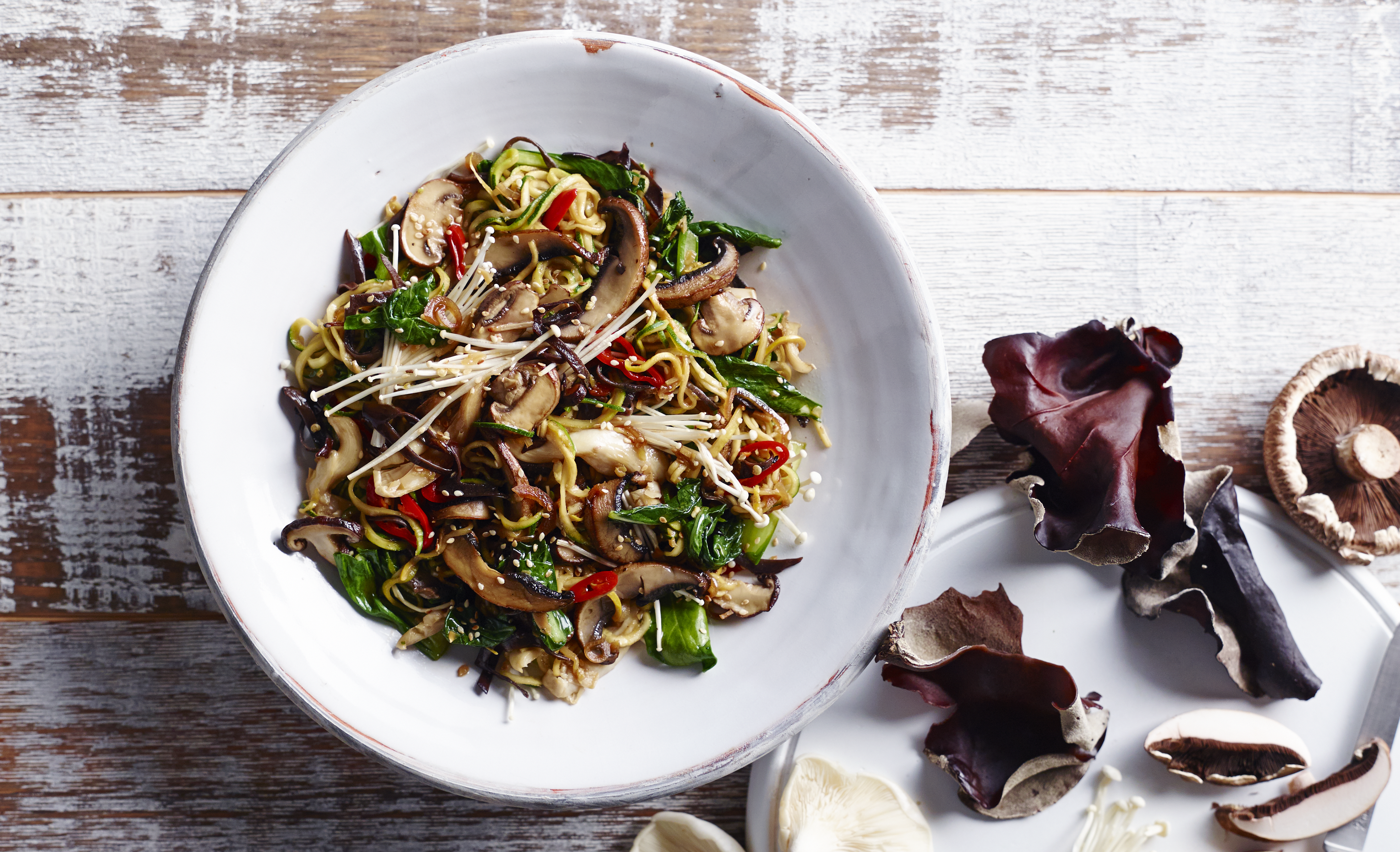

Often we think of vegetable dishes as sides, when really we should see them as stars. This delicious stir-fry, which is easily good enough to have as a main meal, shows just how exciting veggie dishes can be. Let’s celebrate the wide variety of vegetables that are available to us and have a ball cooking with the seasons, cooking to a budget and, most importantly, cooking for health.
*Dietary Notes:
Recipe courtesy of Pete Evans. For more nourishing recipes and wellness insights, you can explore peteevans.com.

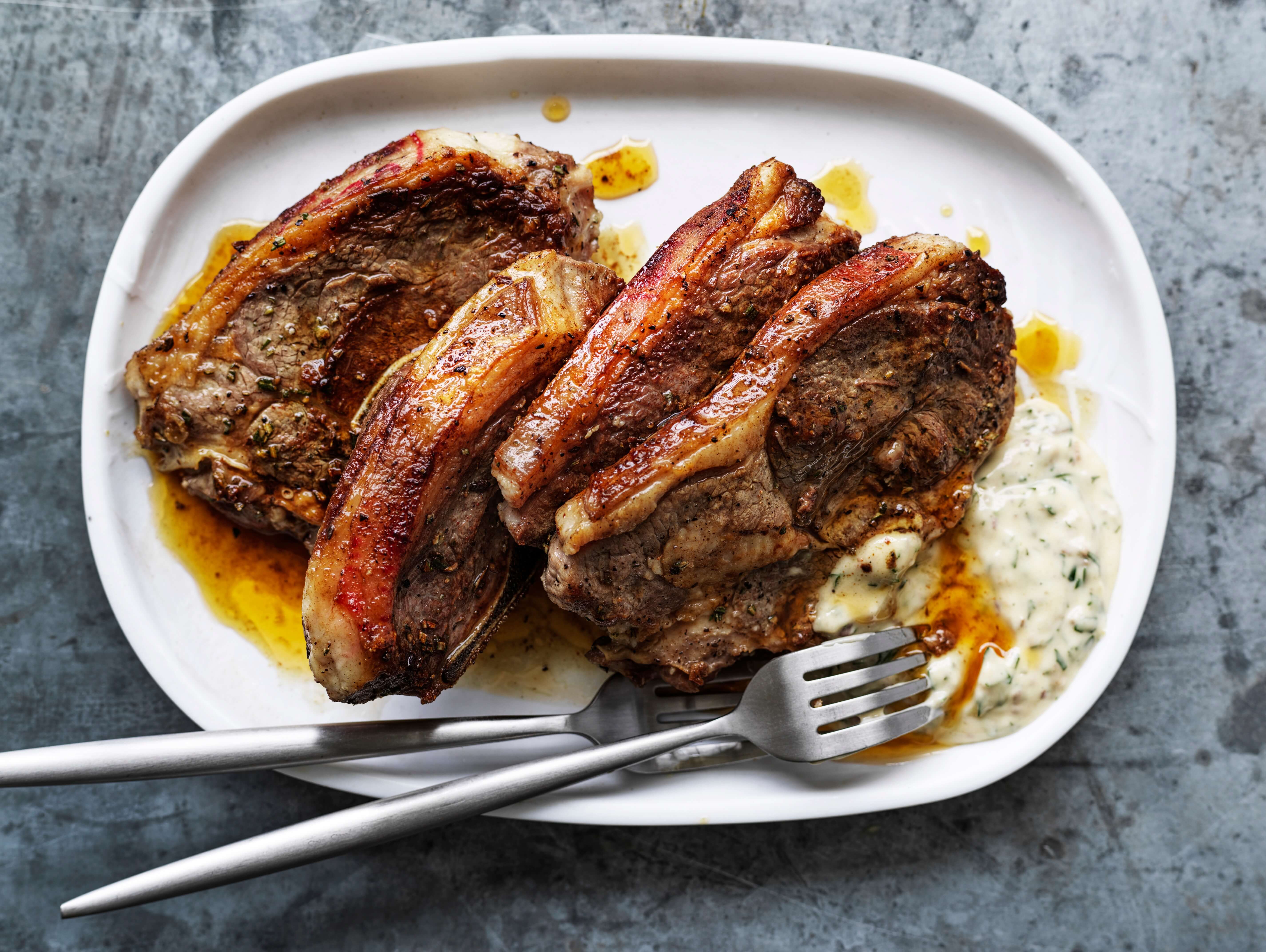
One of the more unusual flavour combinations I was introduced to when I started my chef apprenticeship about 30 years ago was the marriage of anchovy and lamb. The salty nature of anchovies works so well with lamb, that I have used this combination in many ways since that first encounter. Try this classic surf and turf for yourself, I know you’ll be convinced.
Recipe courtesy of Pete Evans. For more nourishing recipes and wellness insights, you can explore peteevans.com.
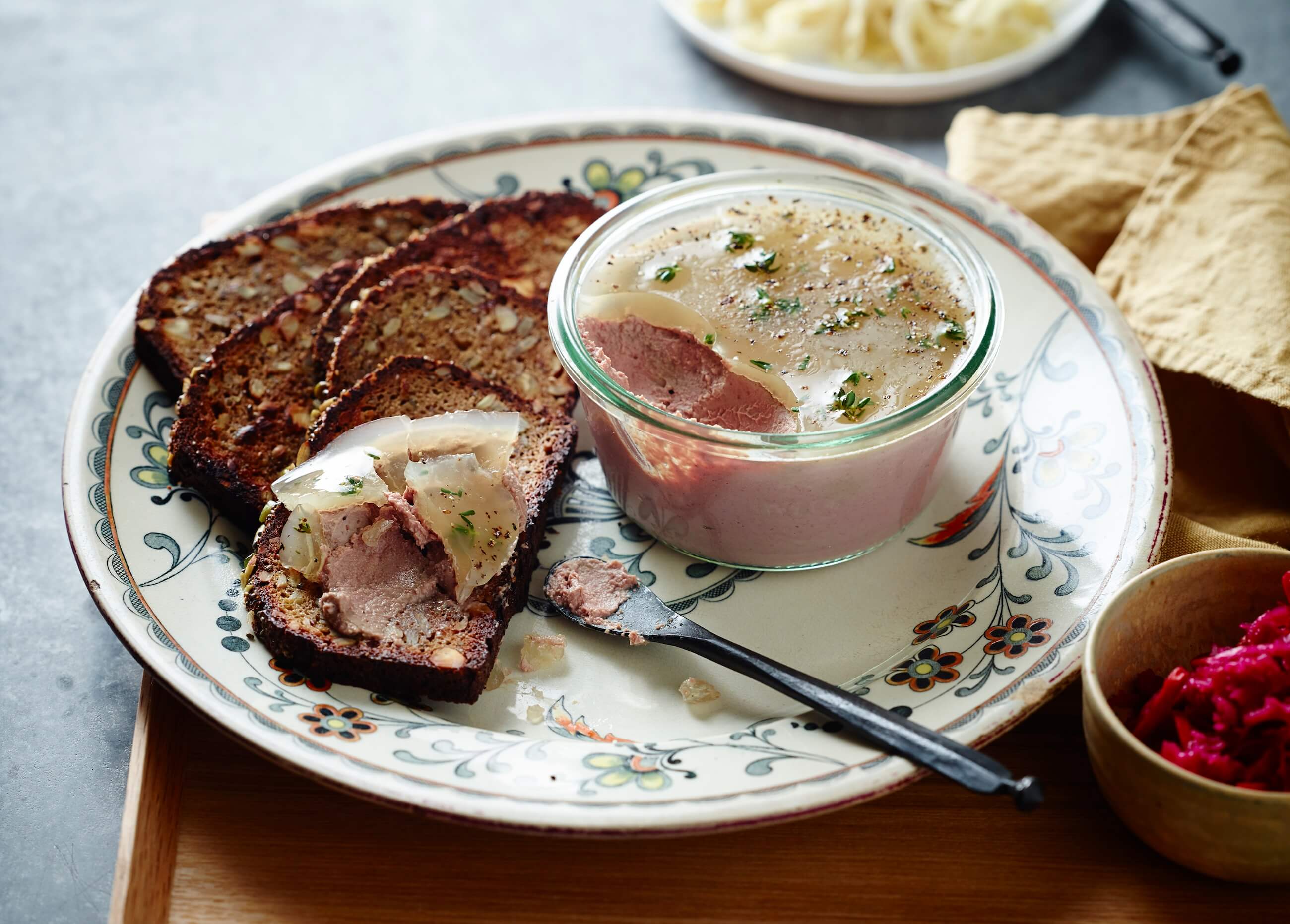
We need to eat more offal, and pâté is the easiest and most subtle way for you to add it – in the form of liver – to your diet. In our house, we absolutely love liver and eat it at least three times a week. We make a big batch of pâté or terrine, then freeze it in small jars or portions so we can enjoy it as part of a meal, as a snack or as an amazing lunchtime treat. We like to serve ours with raw veg – like carrots, cucumber, celery, fennel and salad leaves – and paleo bread or seeded nut crackers with gherkins and fermented veg on the side. You can also use it in lettuce wraps or try adding a spoonful to your chicken soup or bolognese sauce just before serving.
Dietary Notes:
Recipe courtesy of Pete Evans. For more nourishing recipes and wellness insights, you can explore peteevans.com.


For all the fat lovers out there (me being one!), here is a fun dish that really emphasises the fat on fat philosophy by combining bacon and avocado with a piece of meat. Now, cooked avocado may seem a little strange but it adds a certain richness that is satisfying and nourishing. The bacon helps to keep the chicken moist and adds a nice crispness. Serve with a salad or side of your choice and some kraut. It’s a good idea to make a few extra for work or school lunches.
Recipe courtesy of Pete Evans. For more nourishing recipes and wellness insights, you can explore peteevans.com.
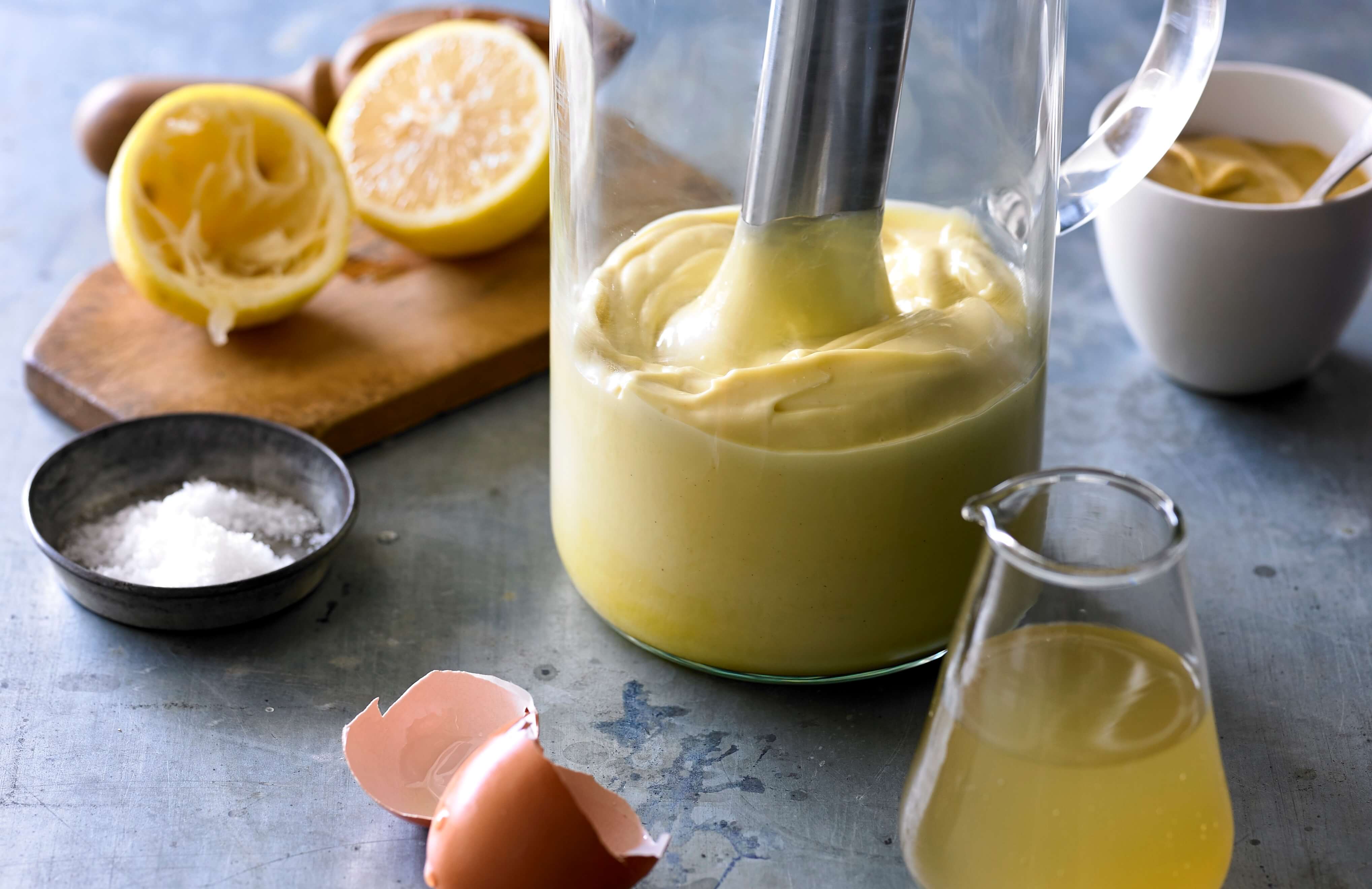
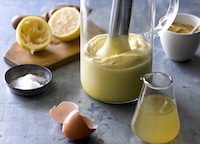
*Dietary Note: May need to consider mustard content for very strict adherence to low FOD-MAP.
Recipe courtesy of Pete Evans. For more nourishing recipes and wellness insights, you can explore peteevans.com.

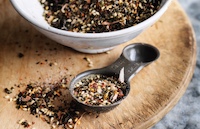

Dietary Note: Paleo if coconut sugar is omitted or substituted.
Recipe courtesy of Pete Evans. For more nourishing recipes and wellness insights, you can explore peteevans.com.
Keep this area empty if no references present.
The broth can be stored in the refrigerator for up to 4 days or frozen for up to 3 months.
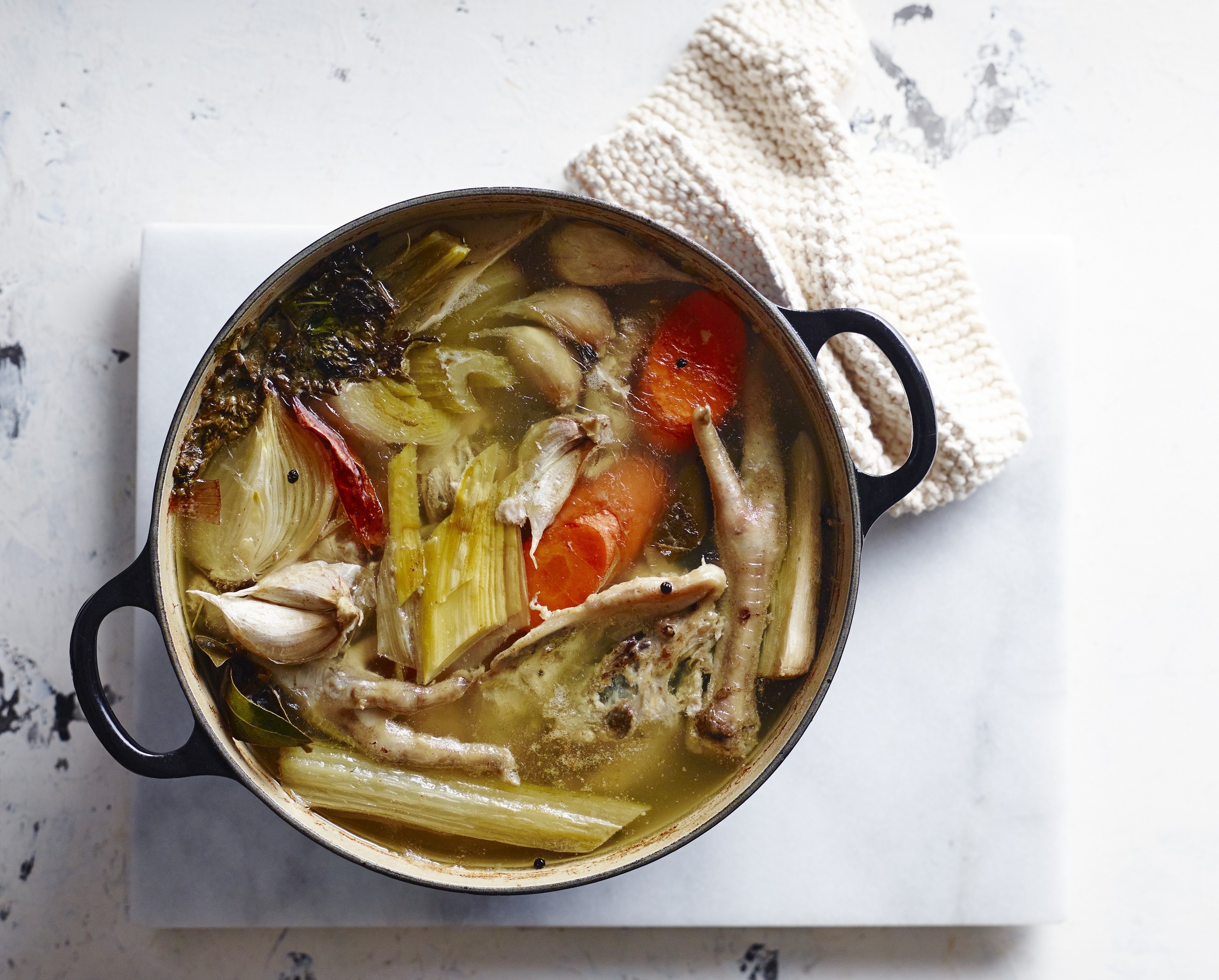

Dietary Notes:
Recipe courtesy of Pete Evans. For more nourishing recipes and wellness insights, you can explore peteevans.com.
workout_type: Full body
workout_description: Sylvia is taking it down to the floor to release tight muscles and improve mobility. She's putting an extra focus on work through your back and torso to improve posture.
workout_total_time: 10:00
workout_equipment: Body weight only
workout_preview_image: 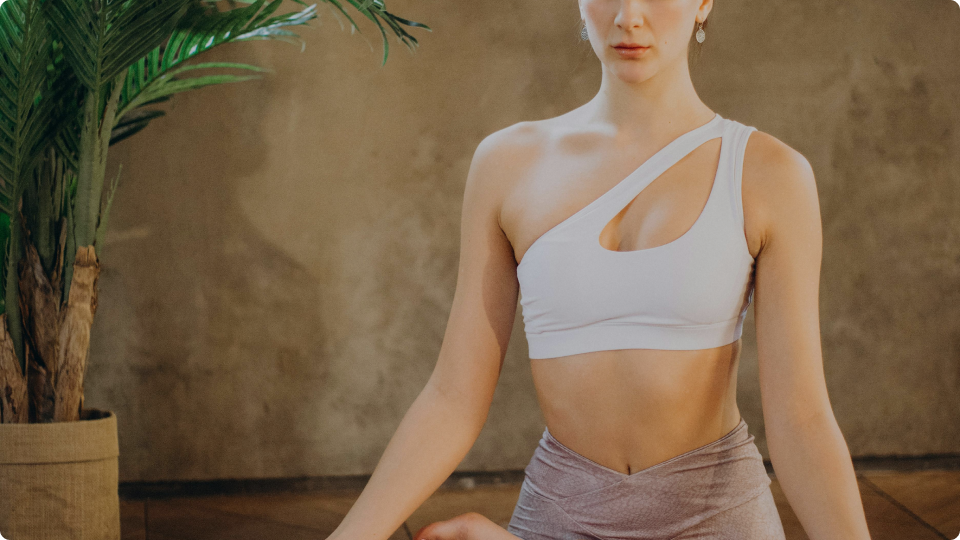
workout_preview_video:

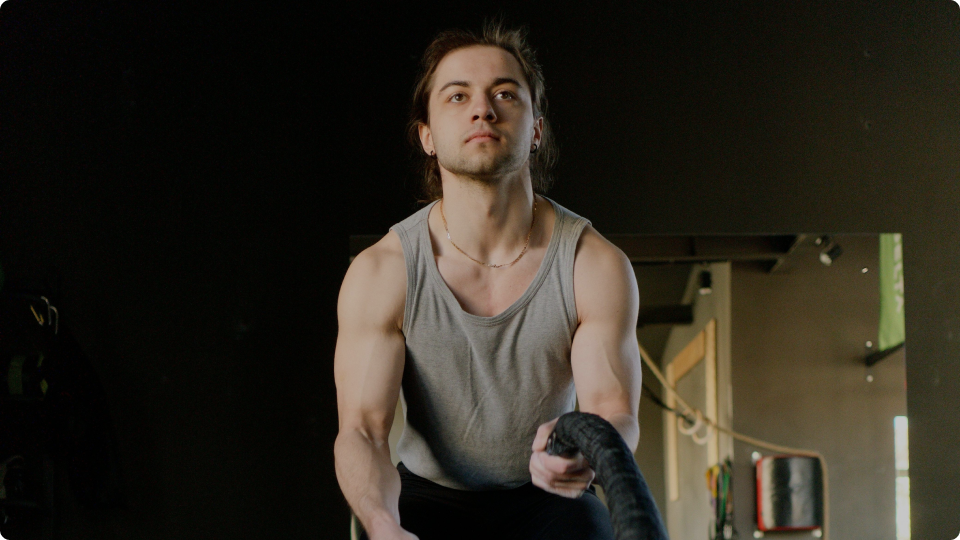
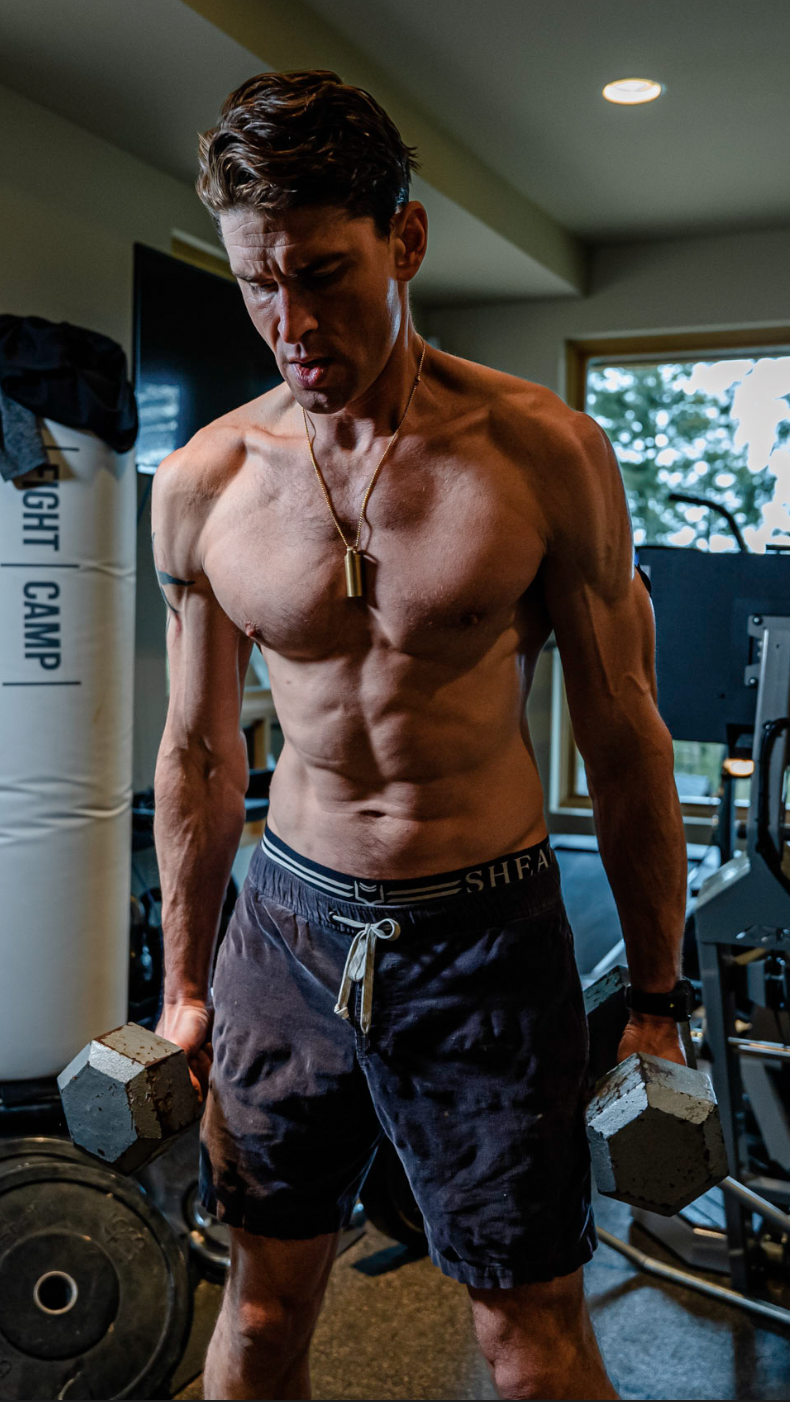
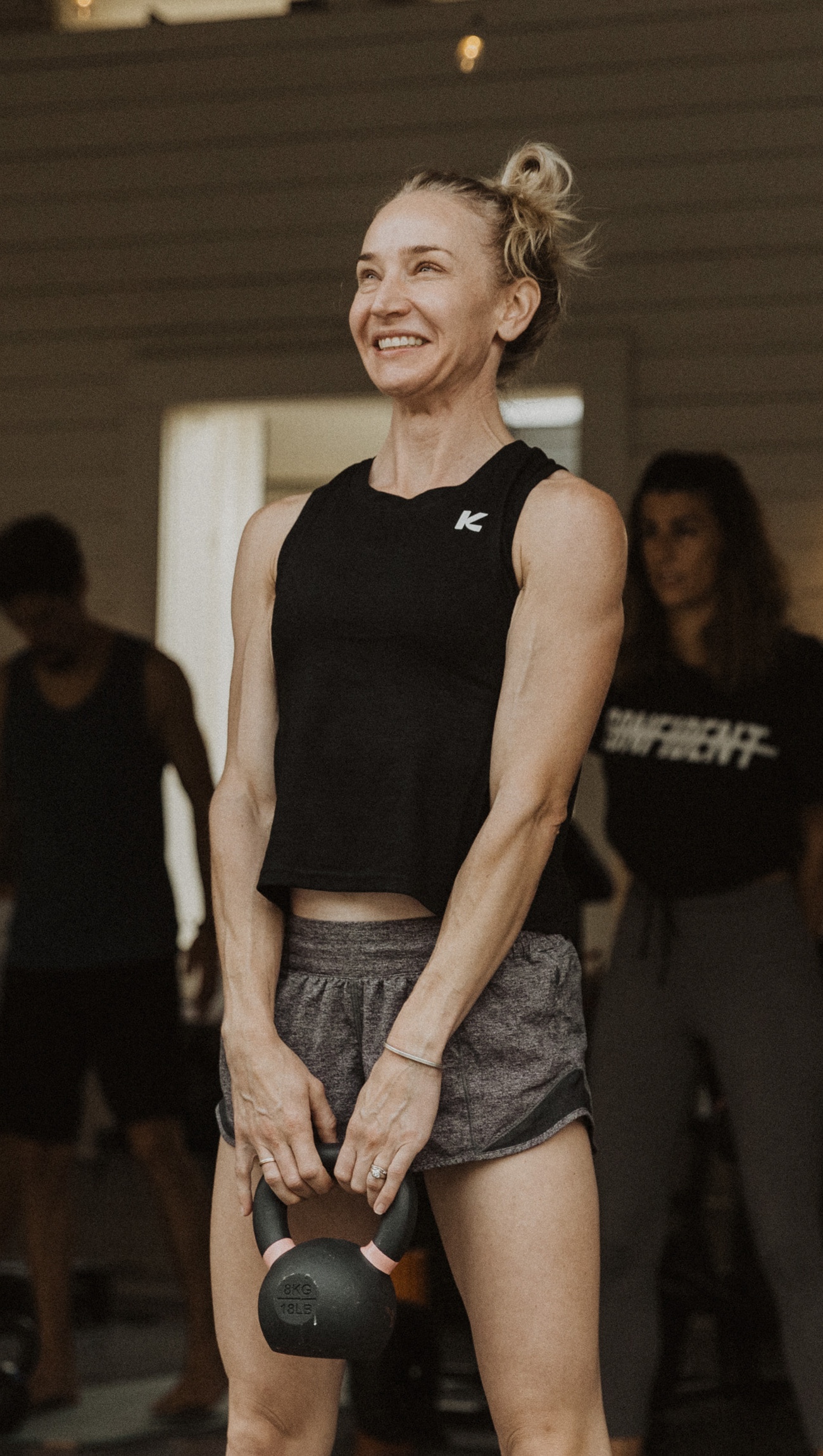
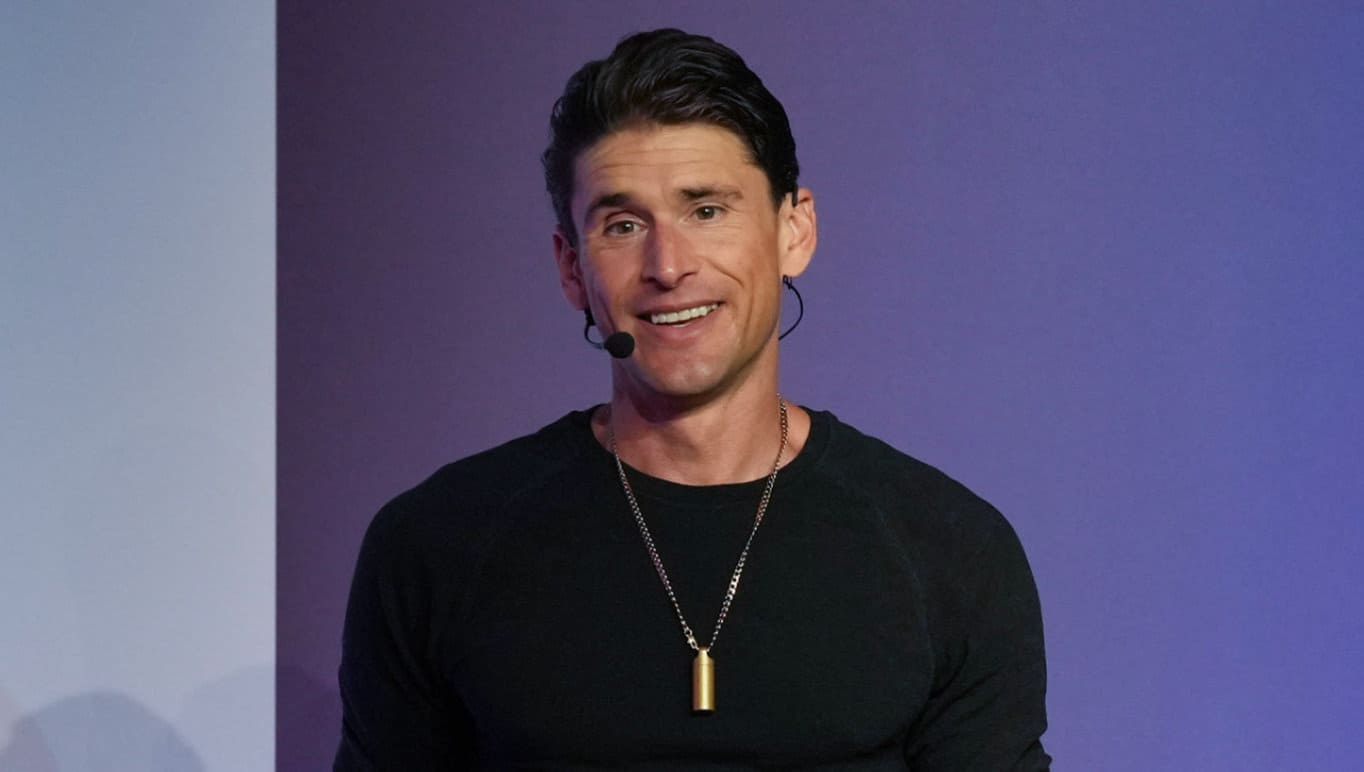

Gift Card valued at $90 or 15% off on your next purchase


Gift Card valued at $90 or 15% off on your next purchase
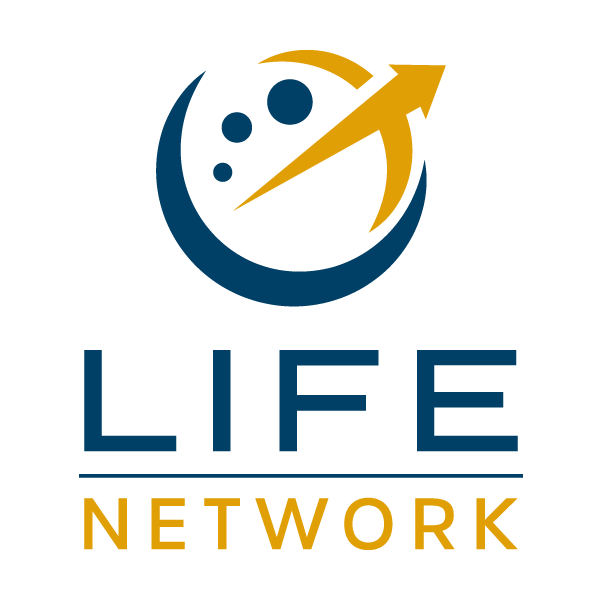

Gift Card valued at $90 or 15% off on your next purchase